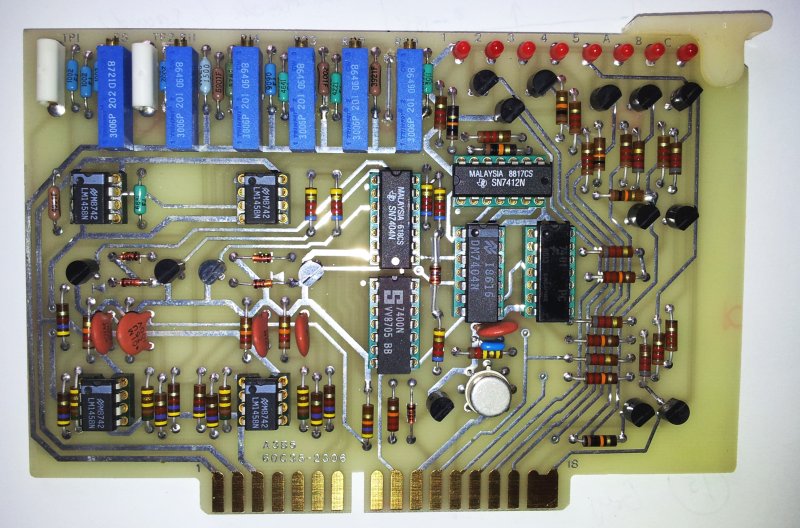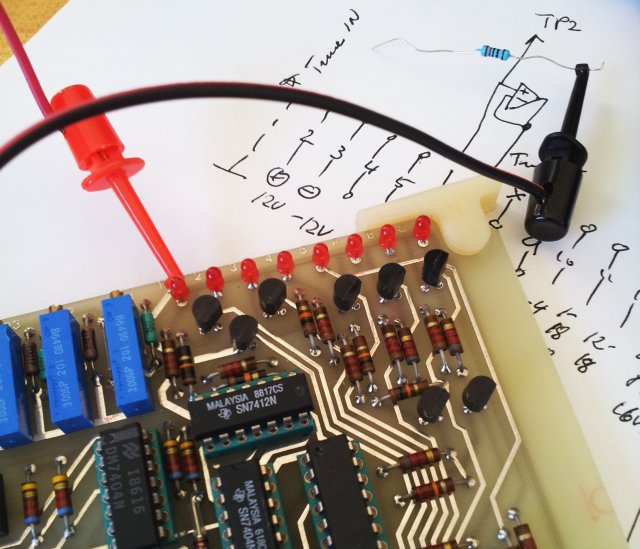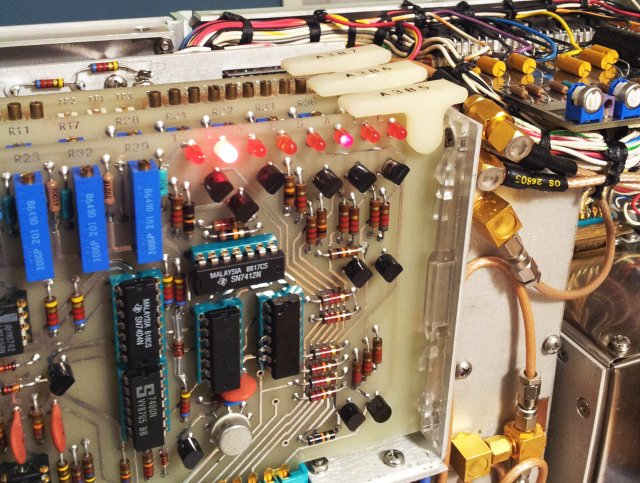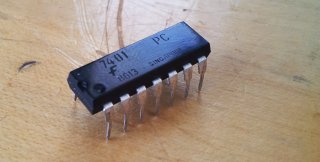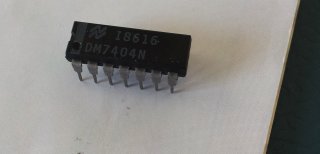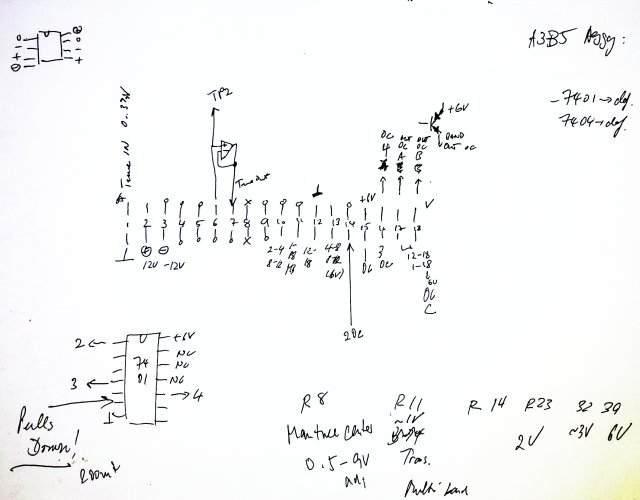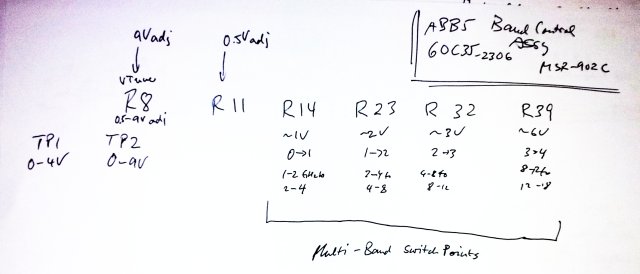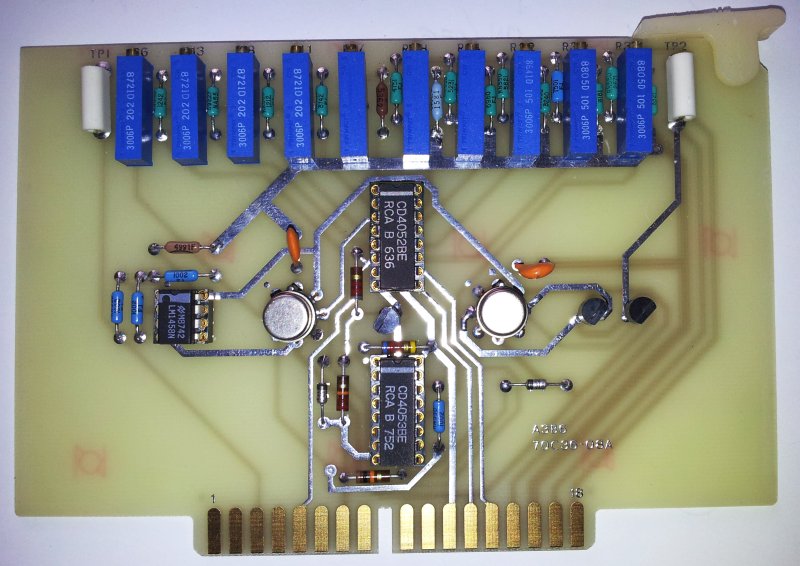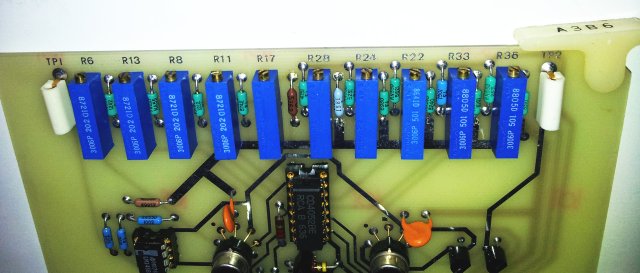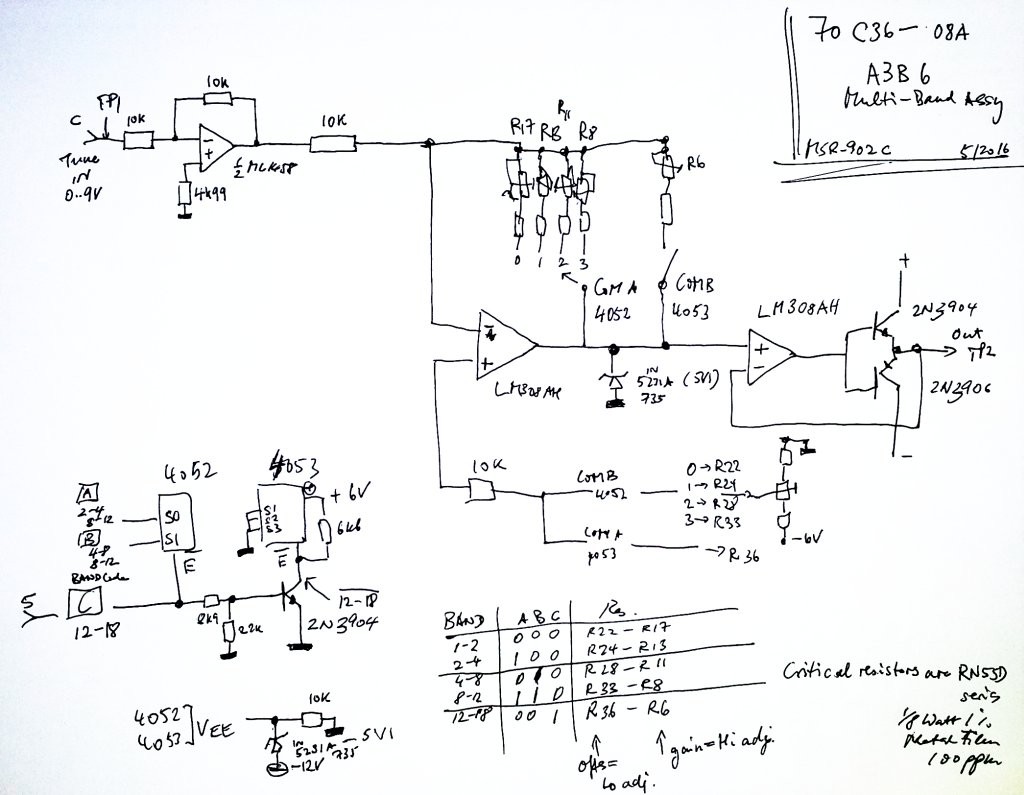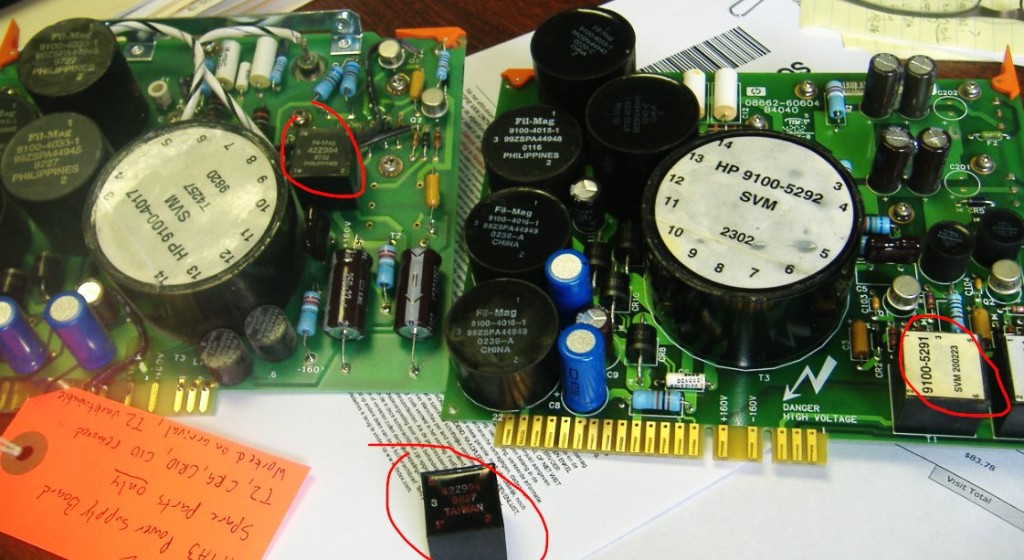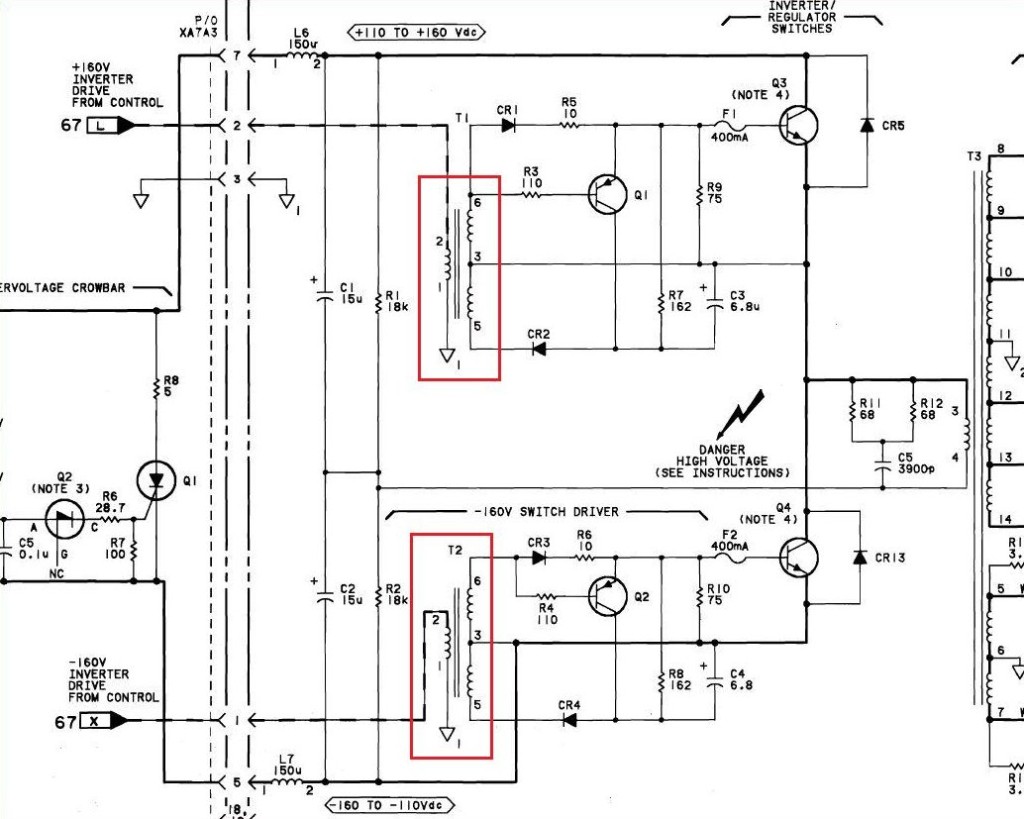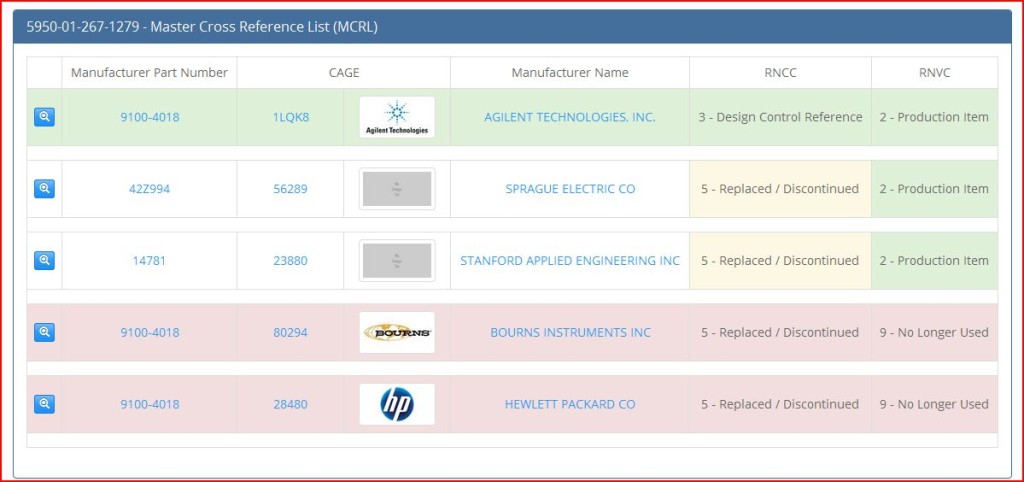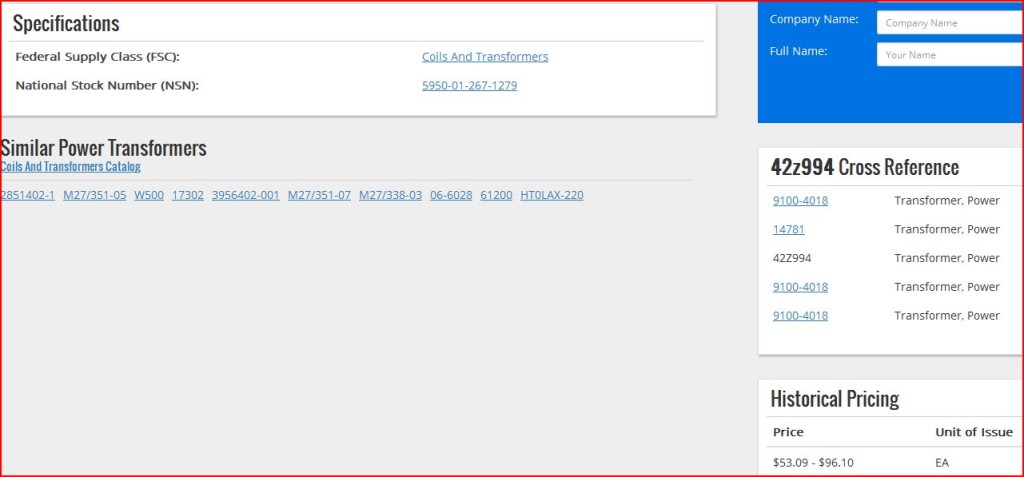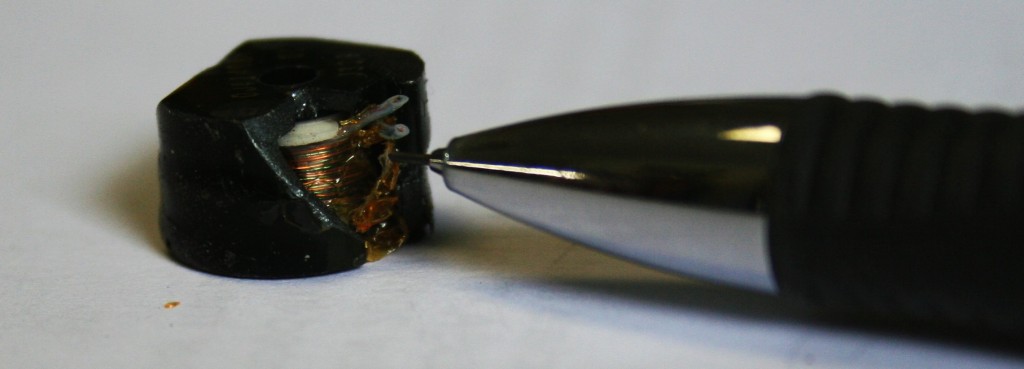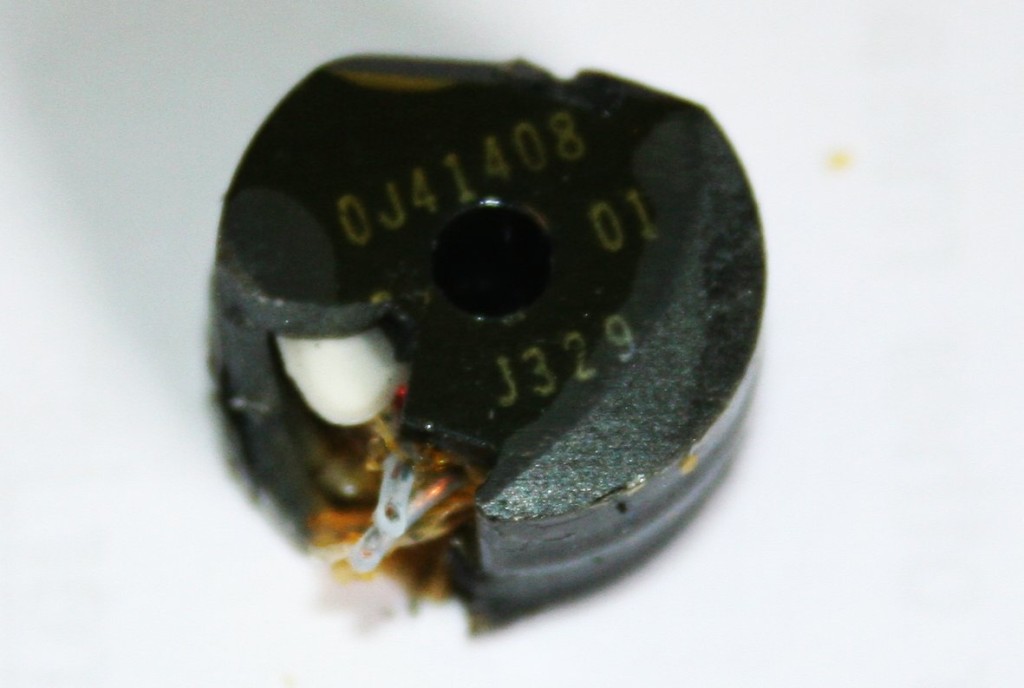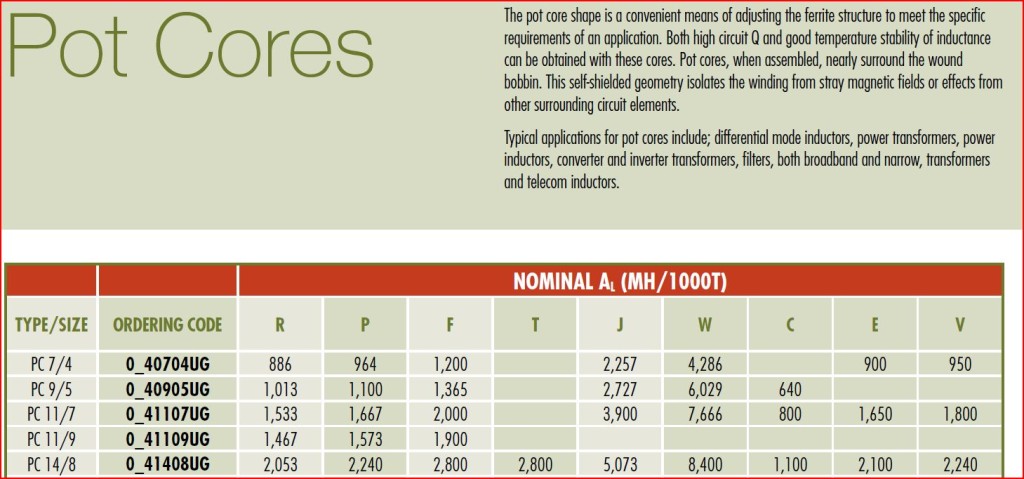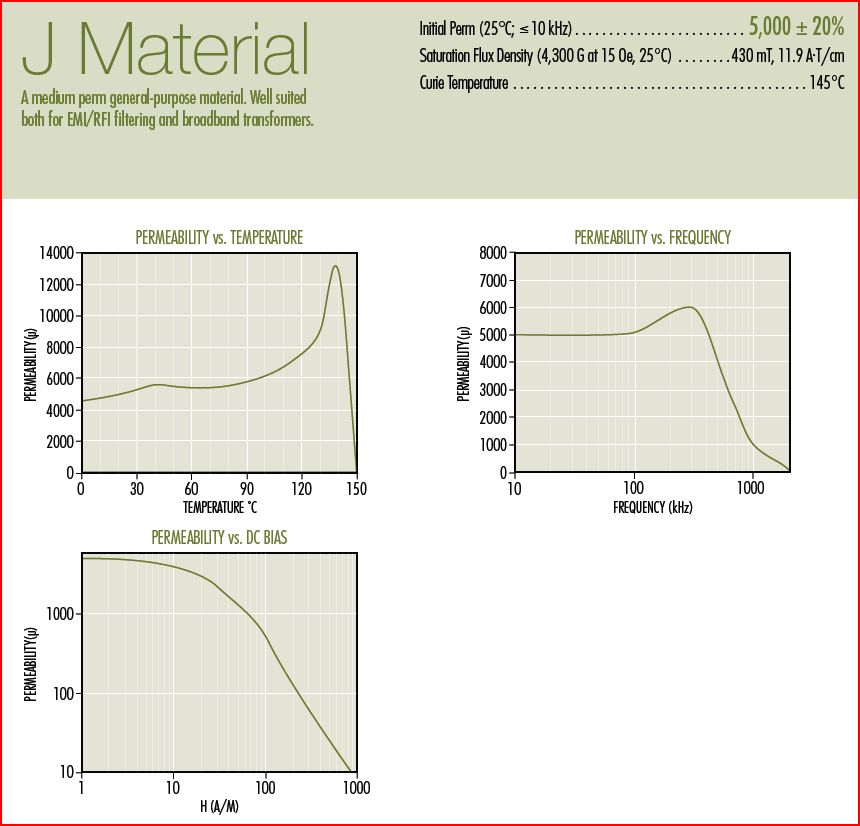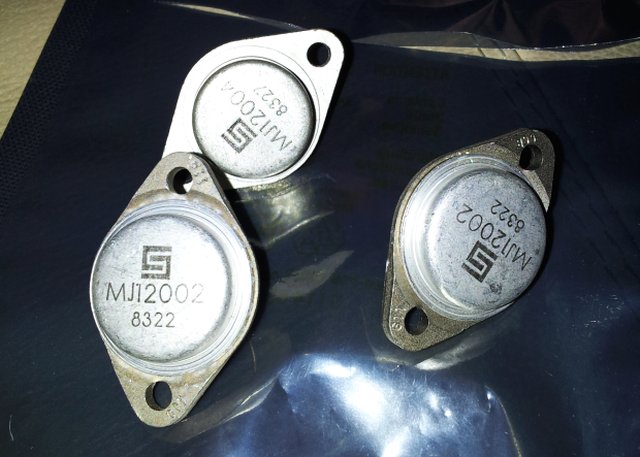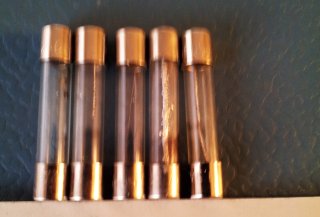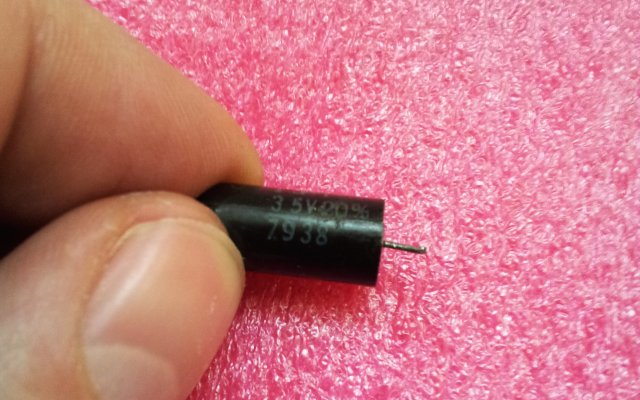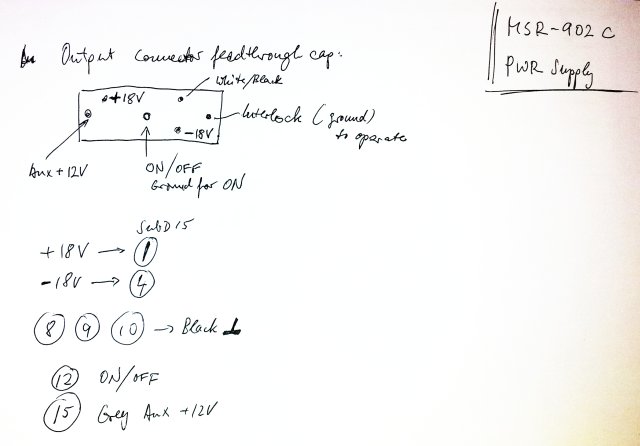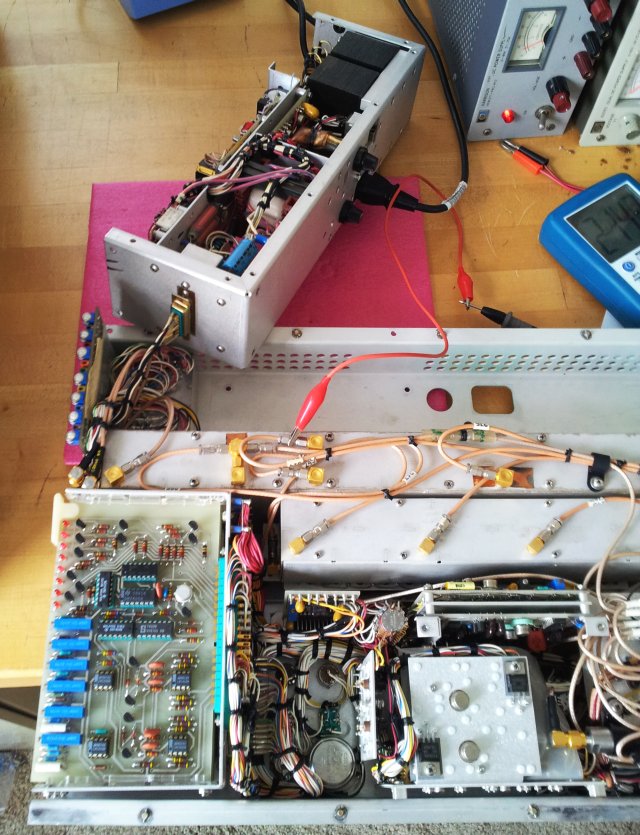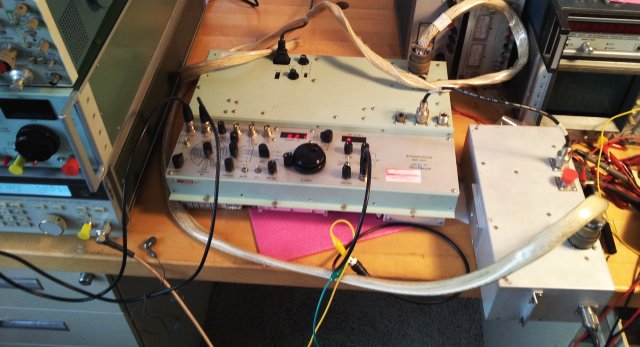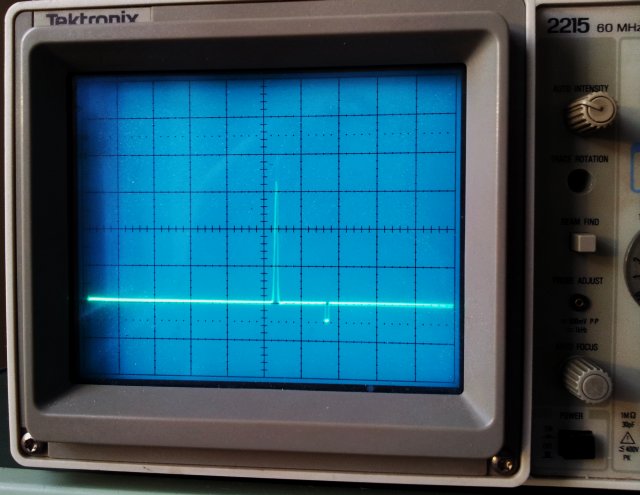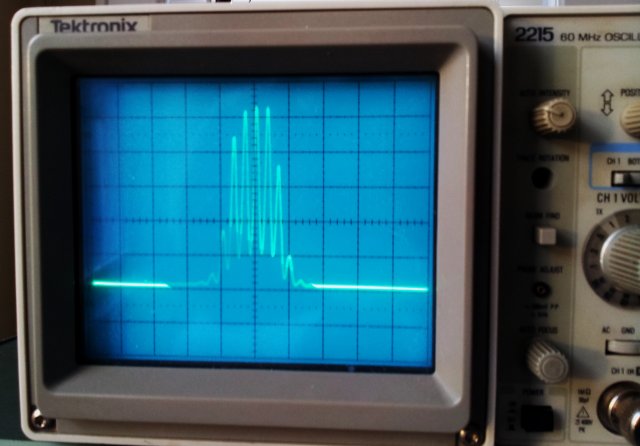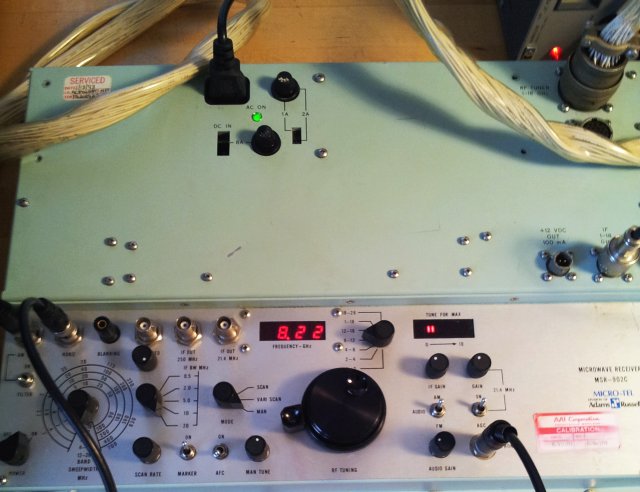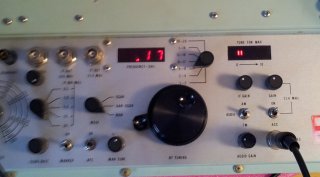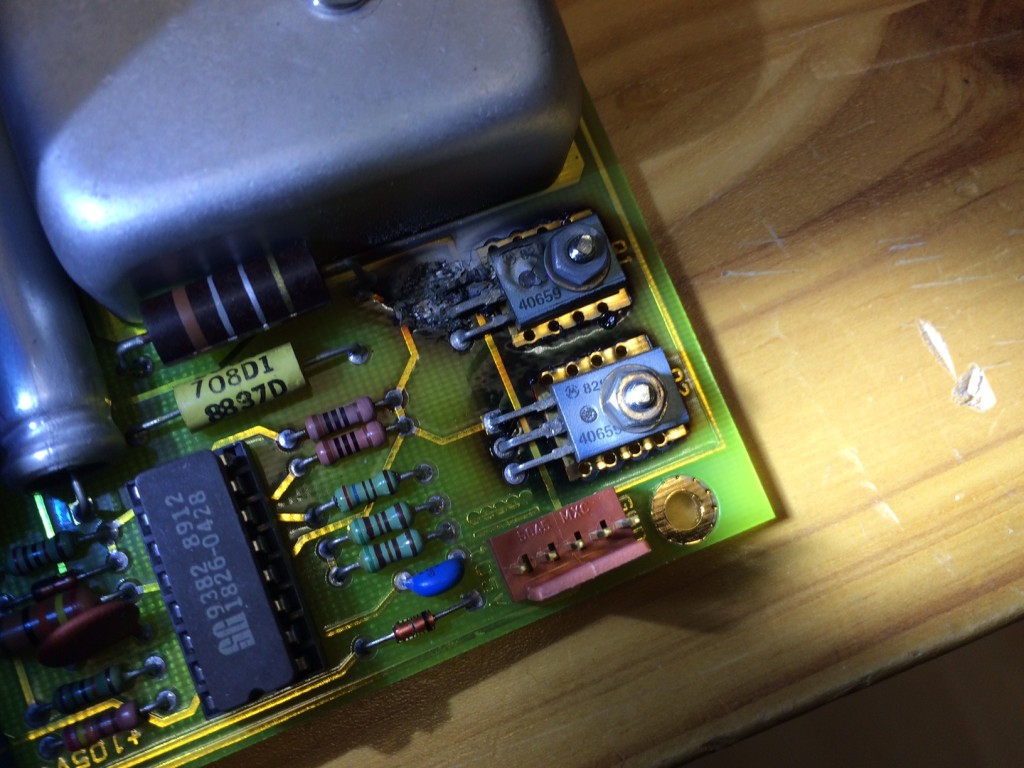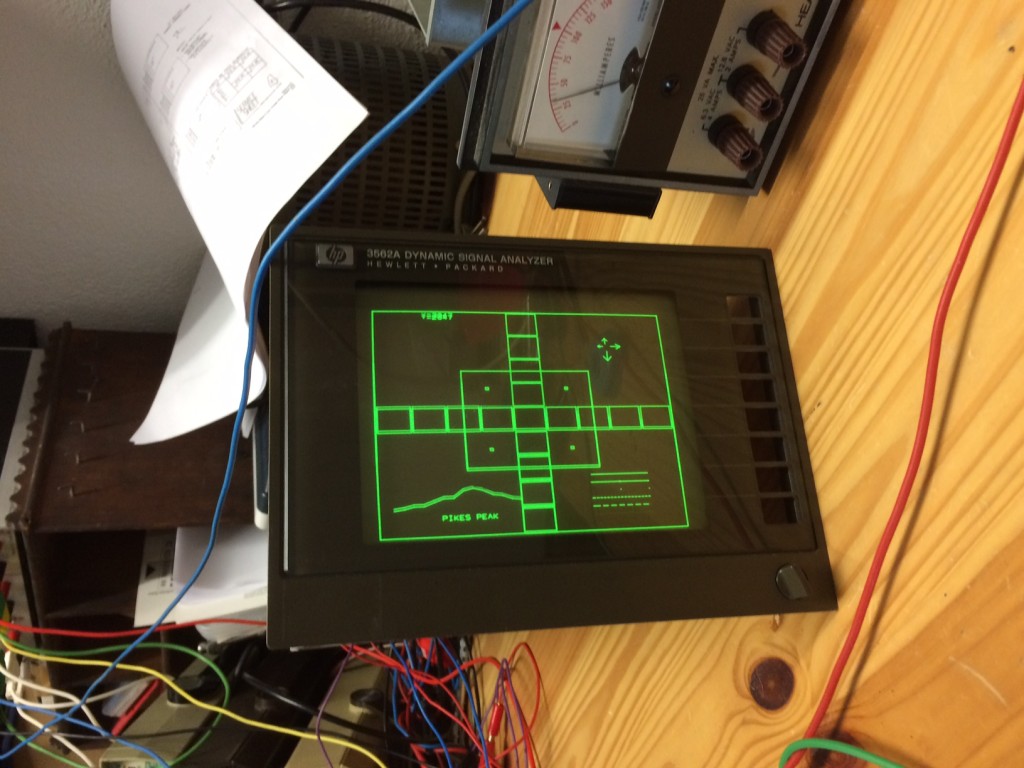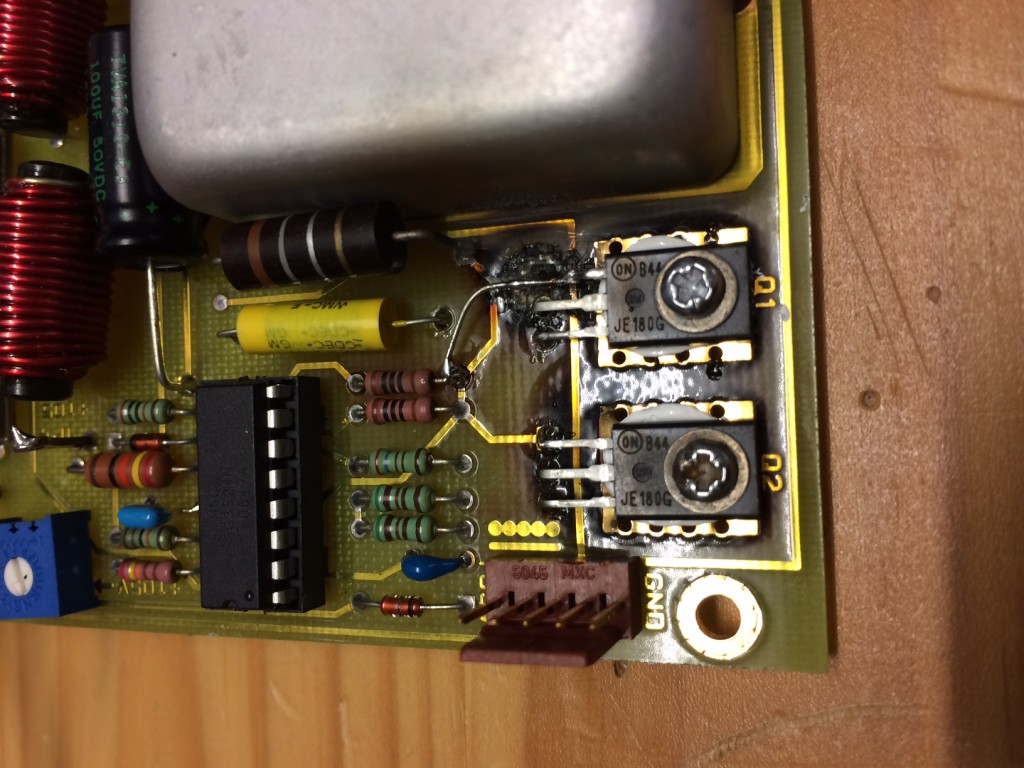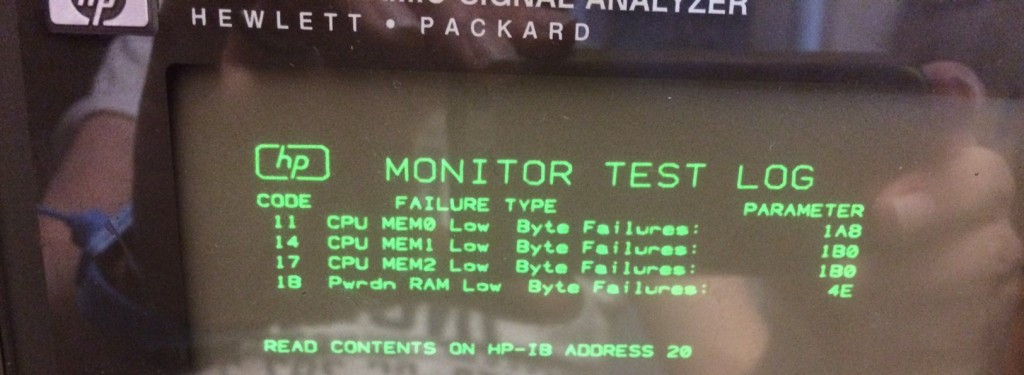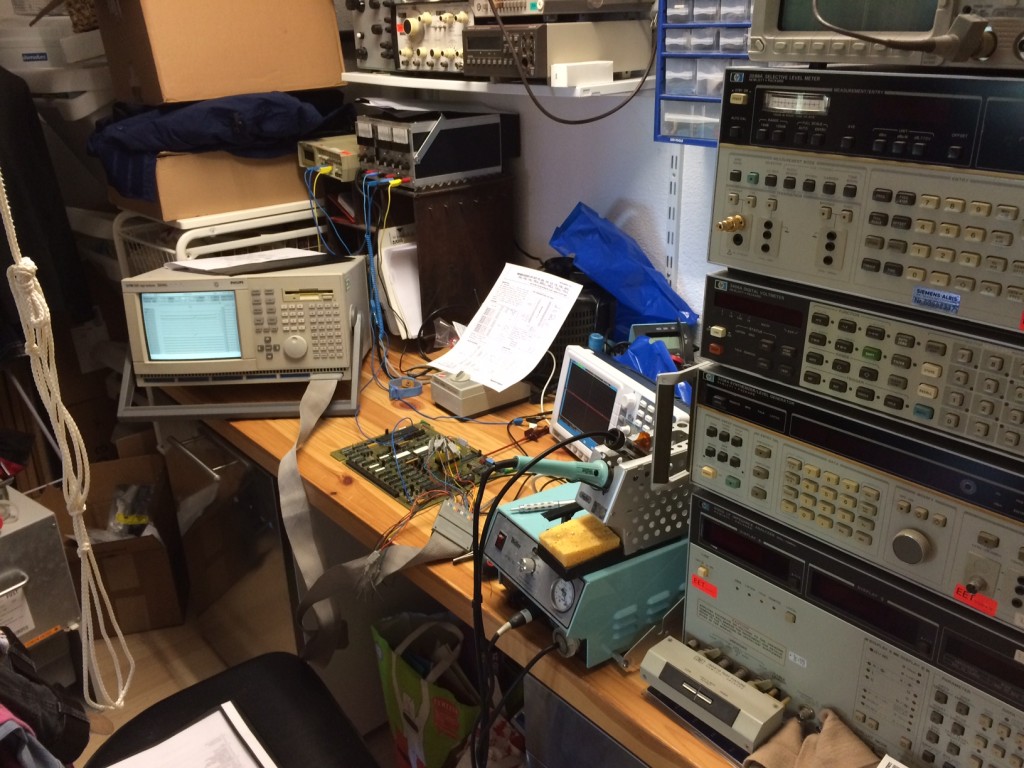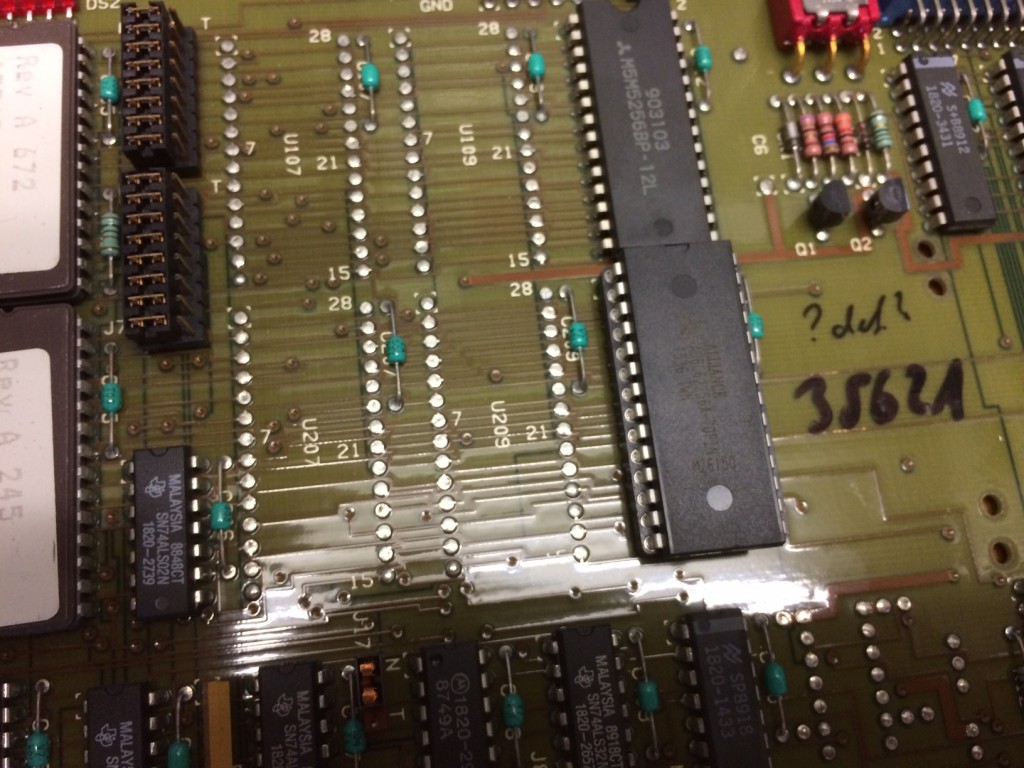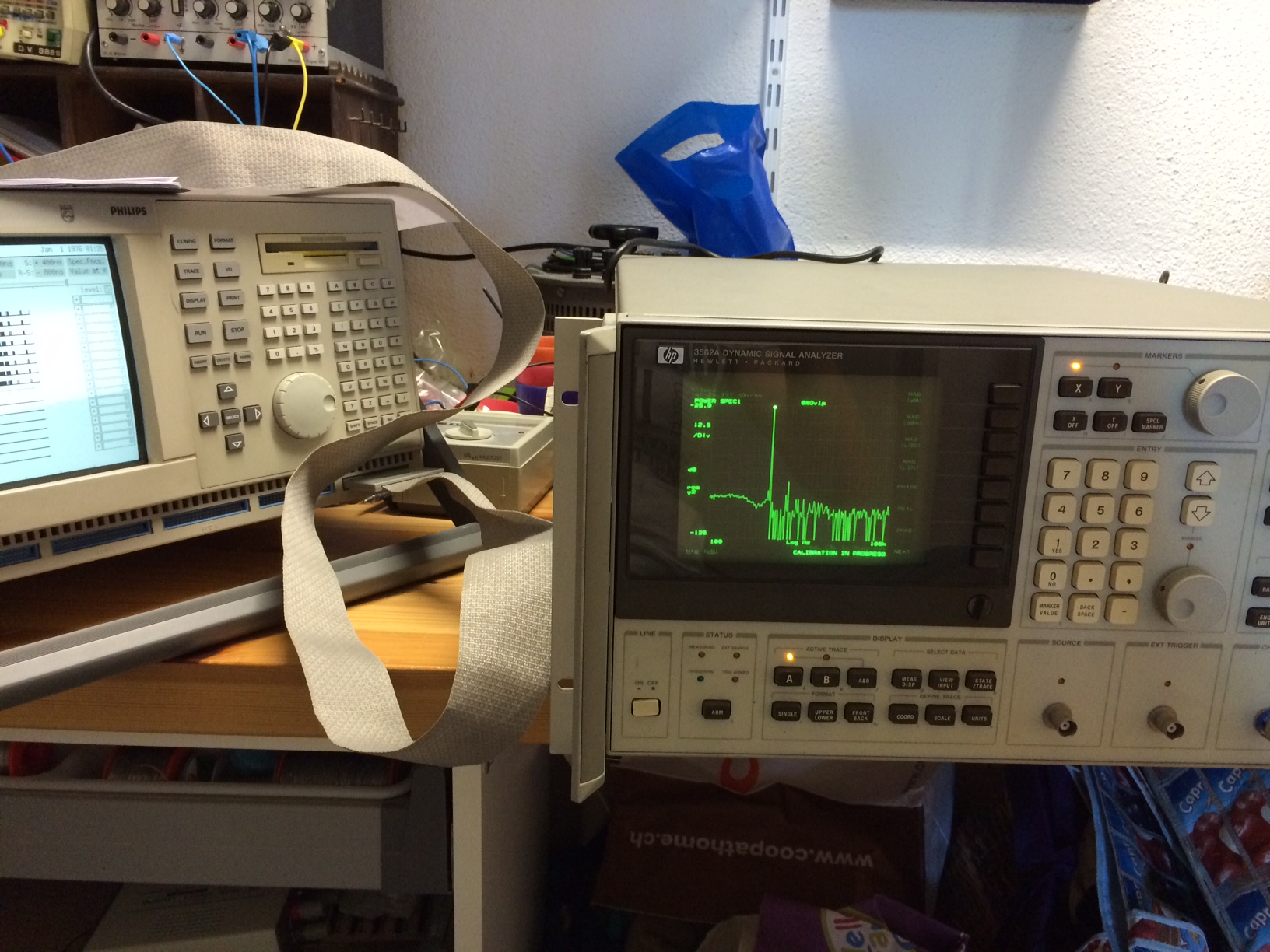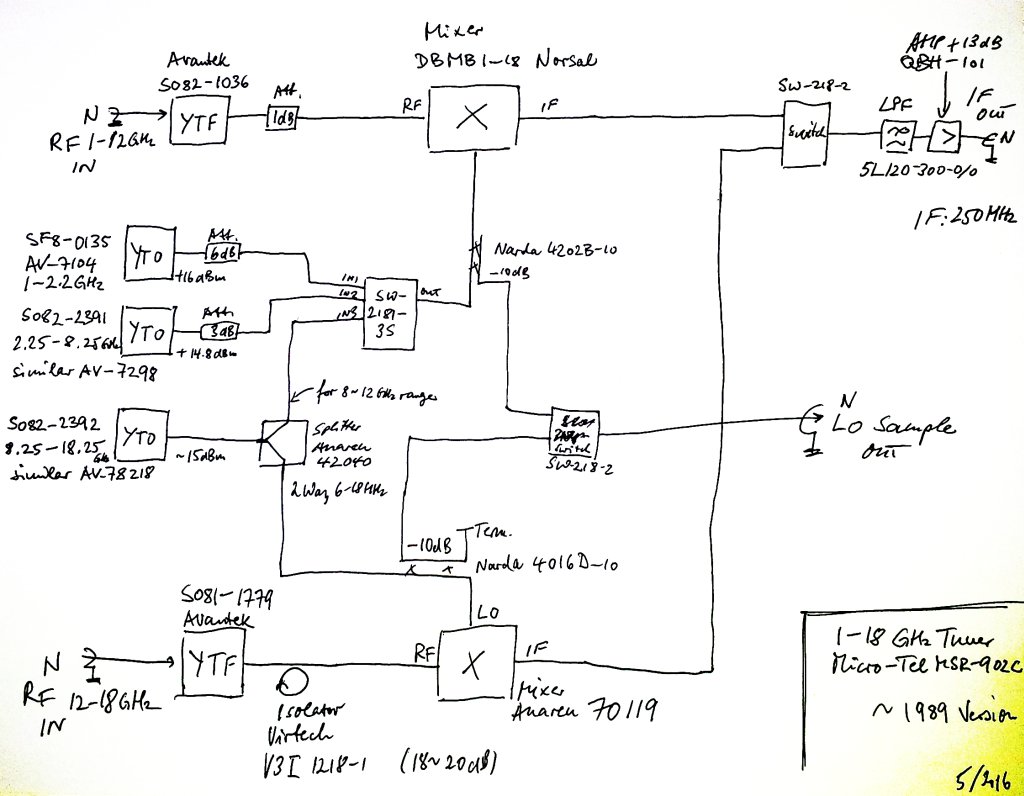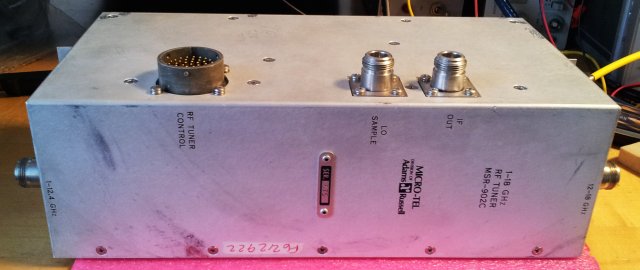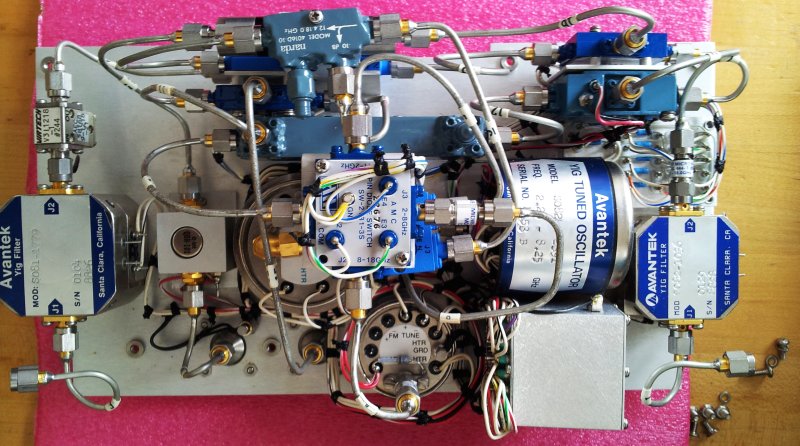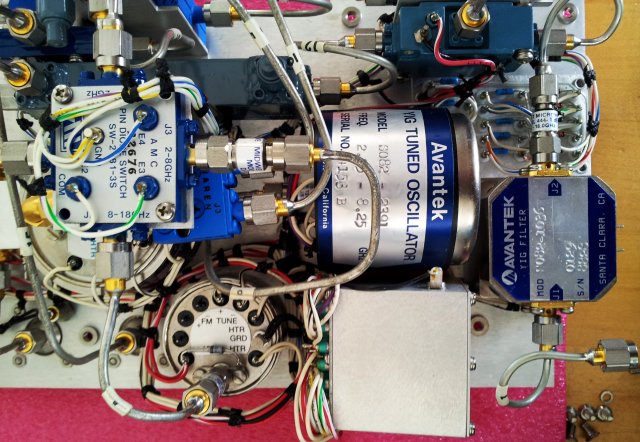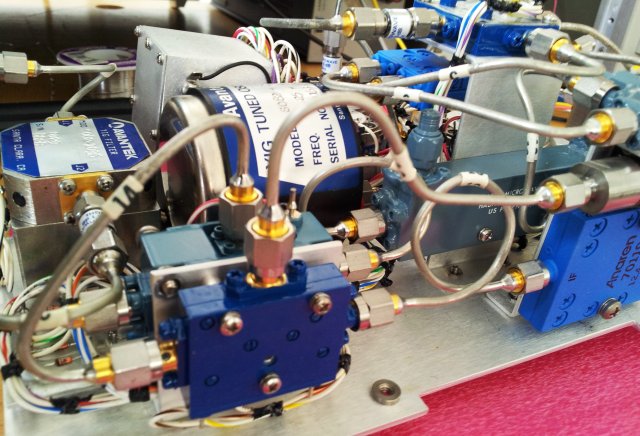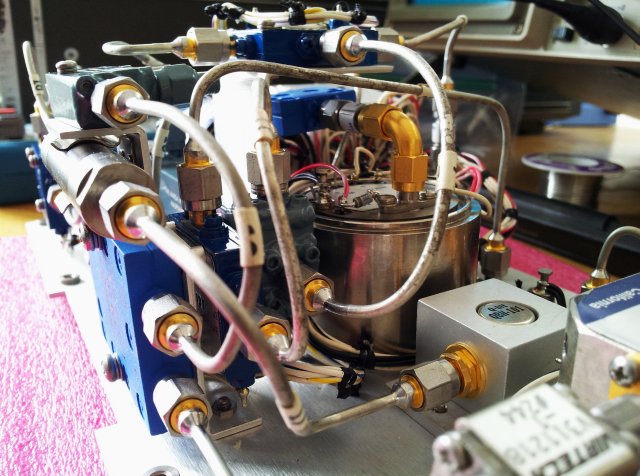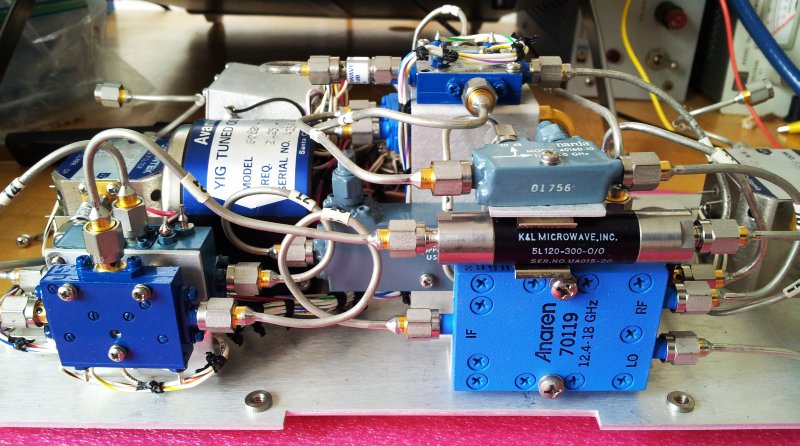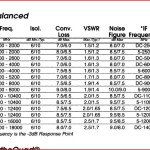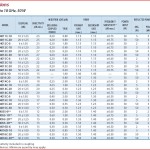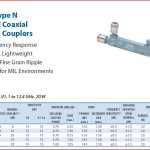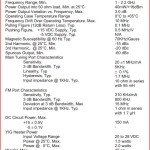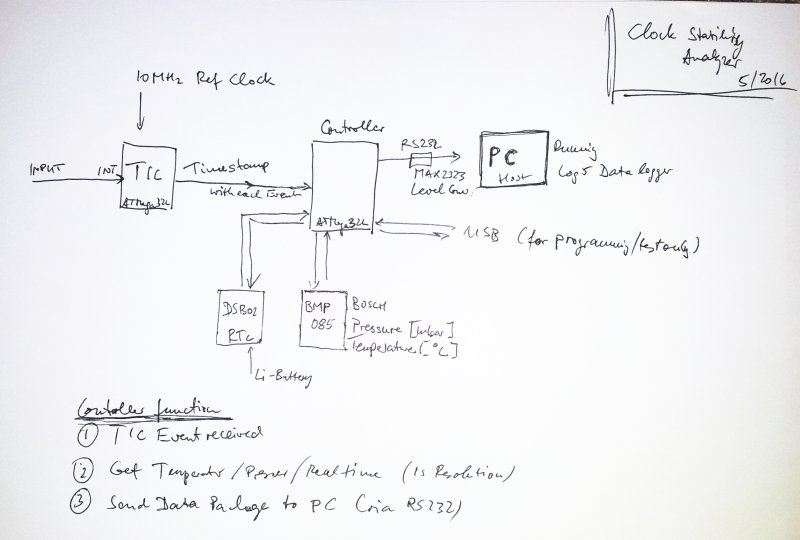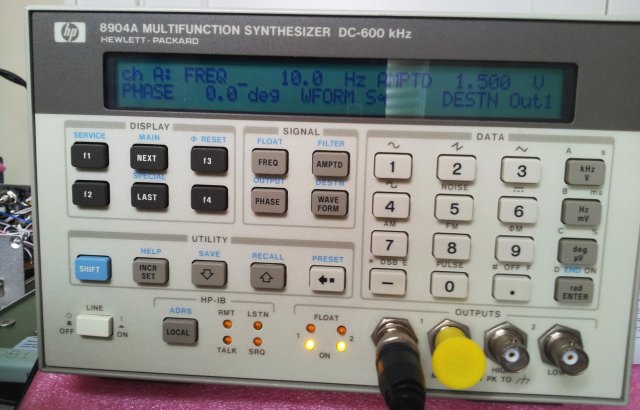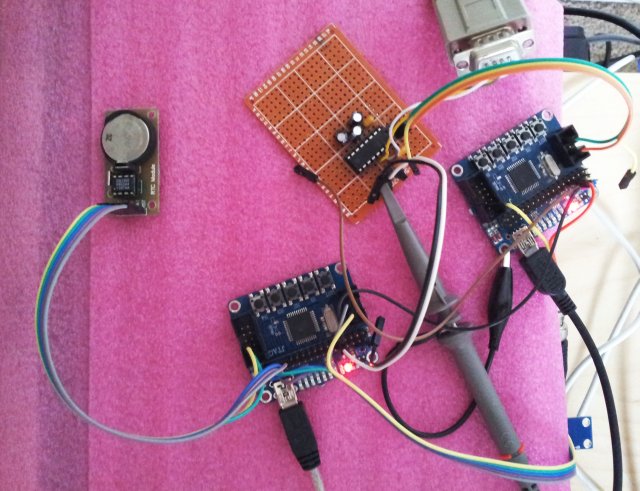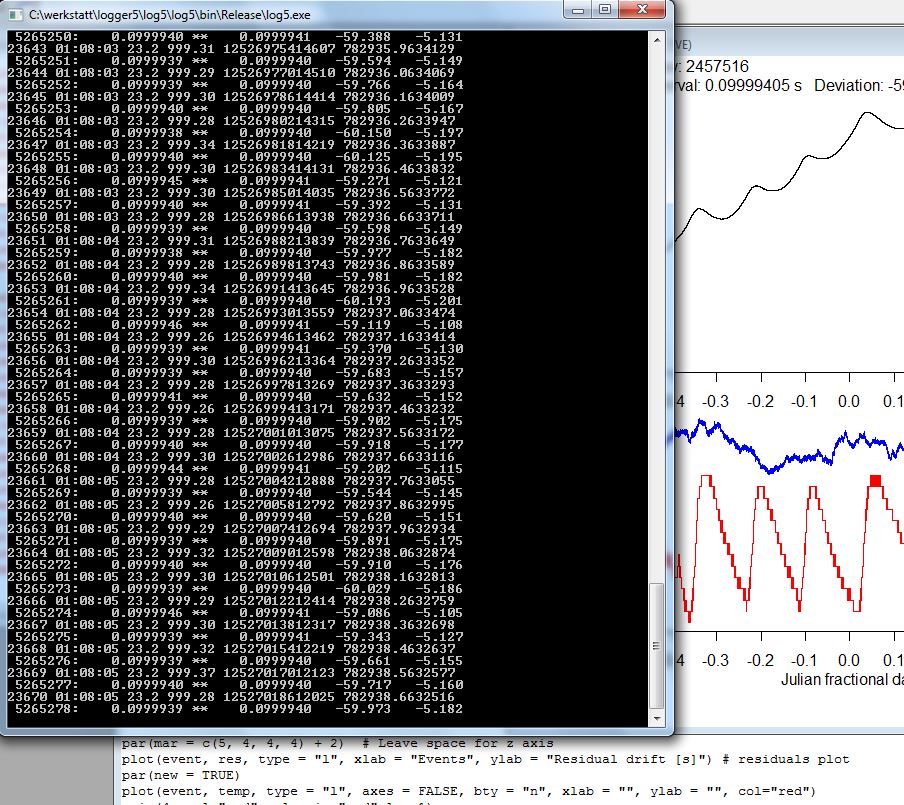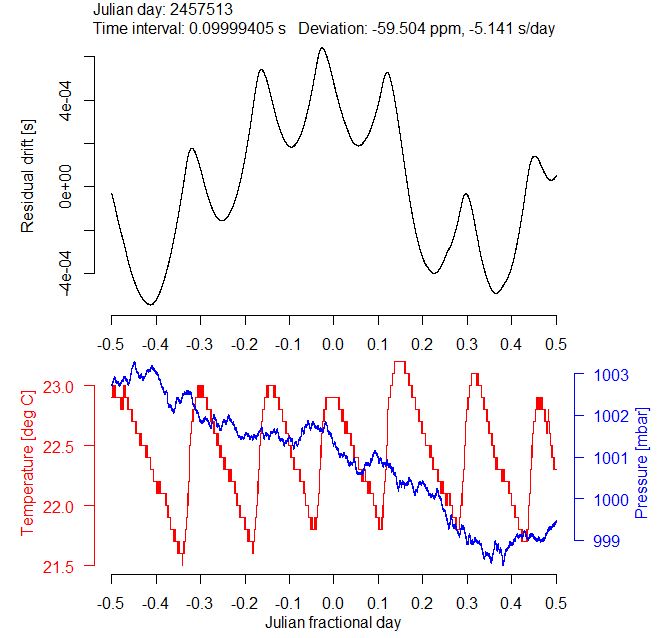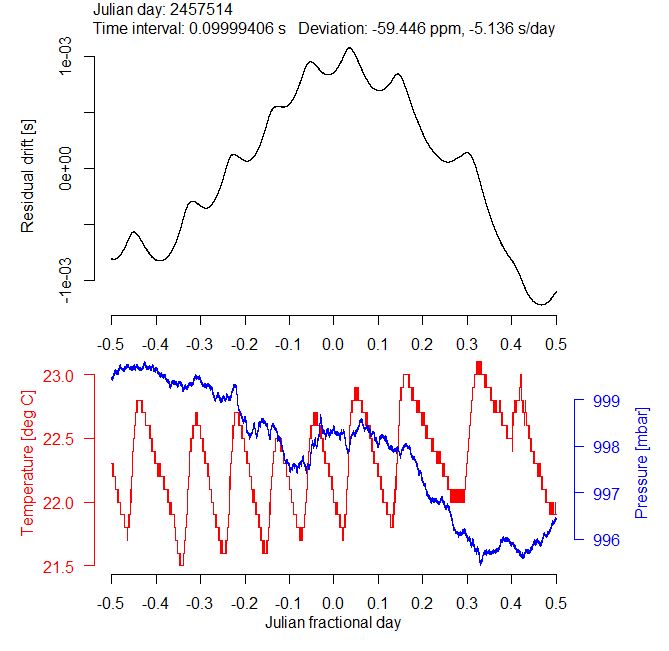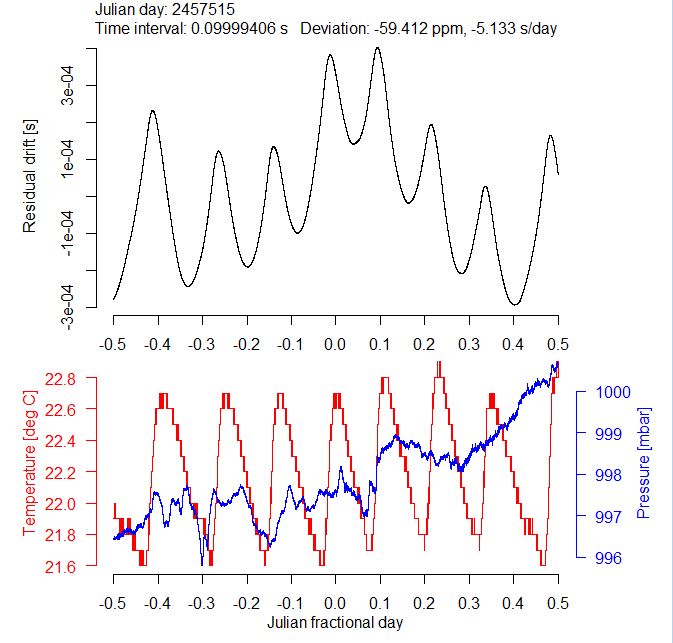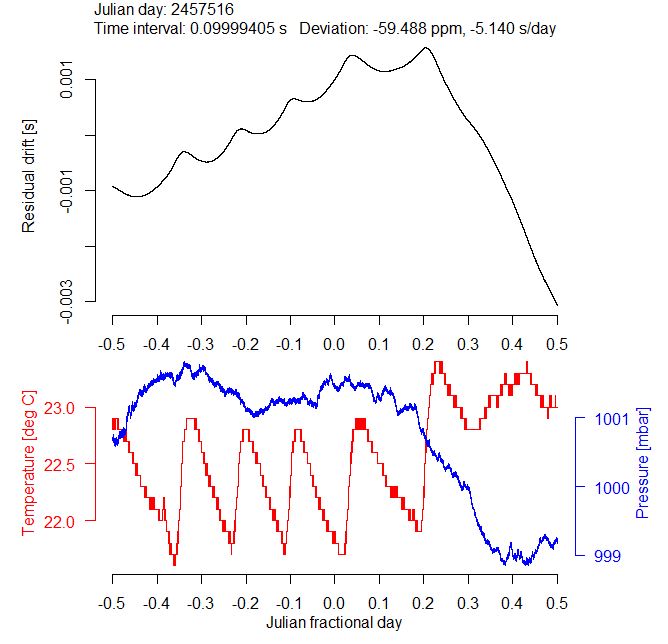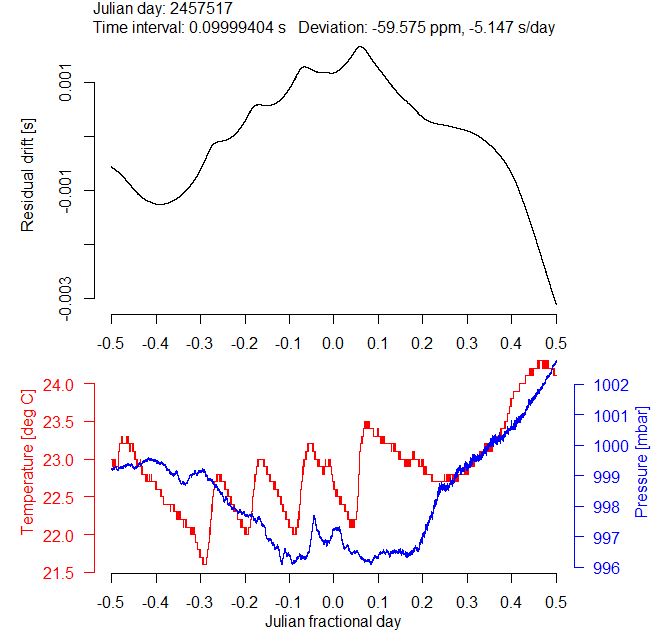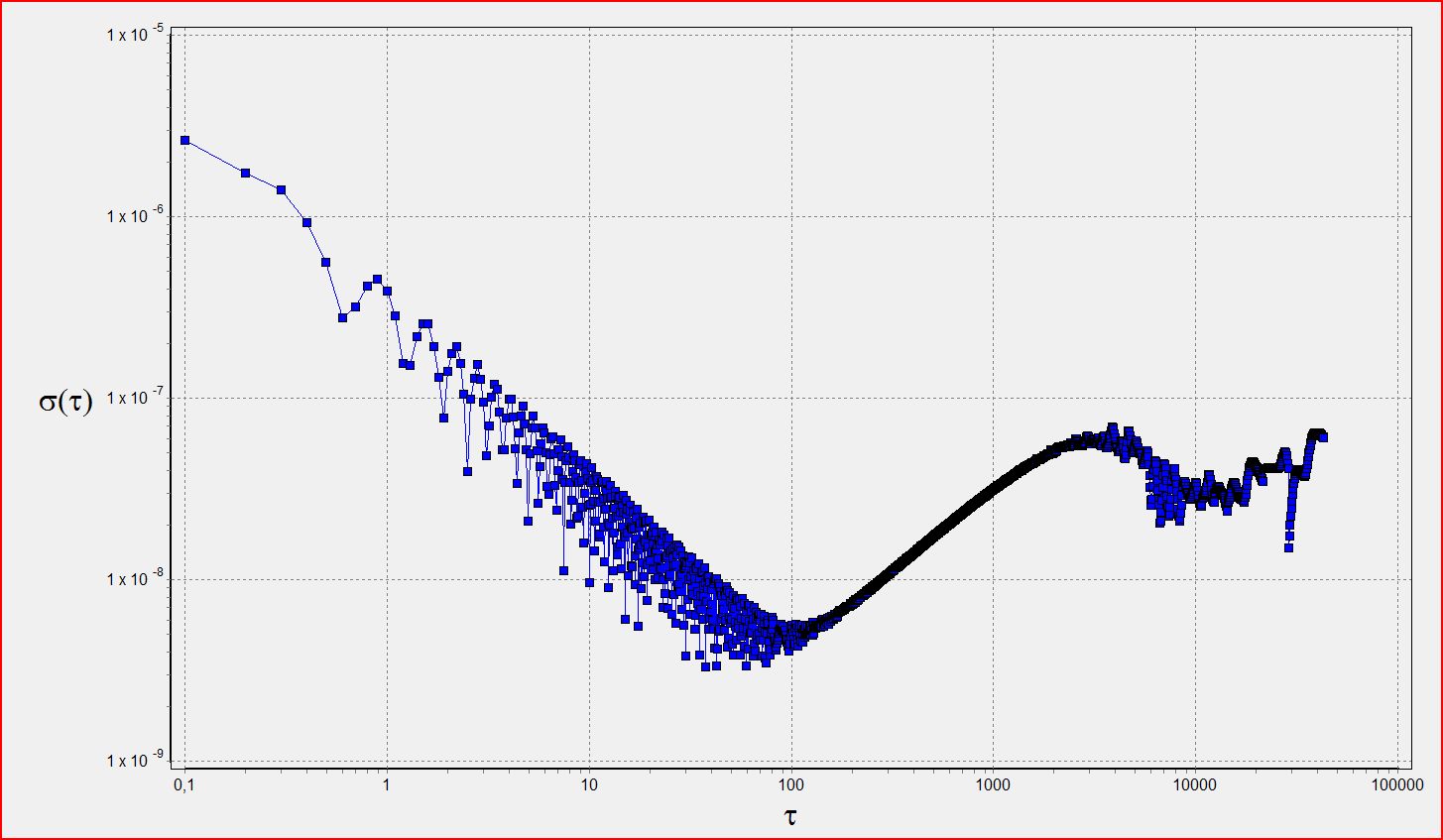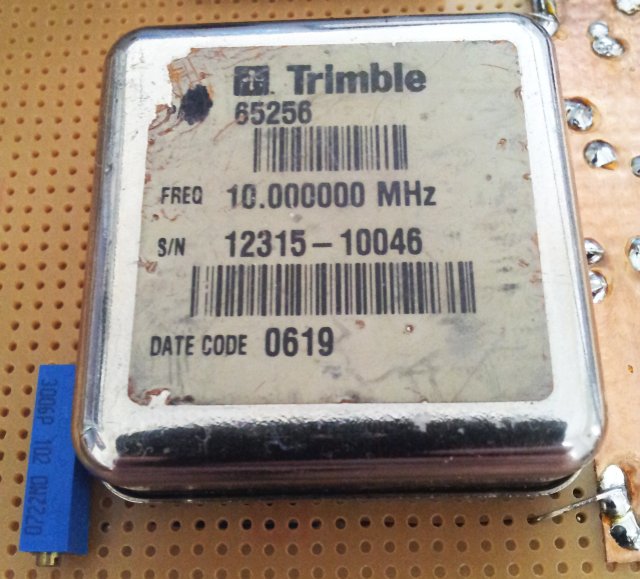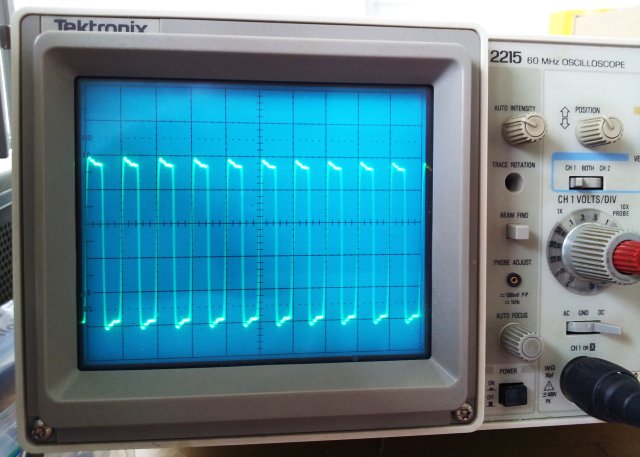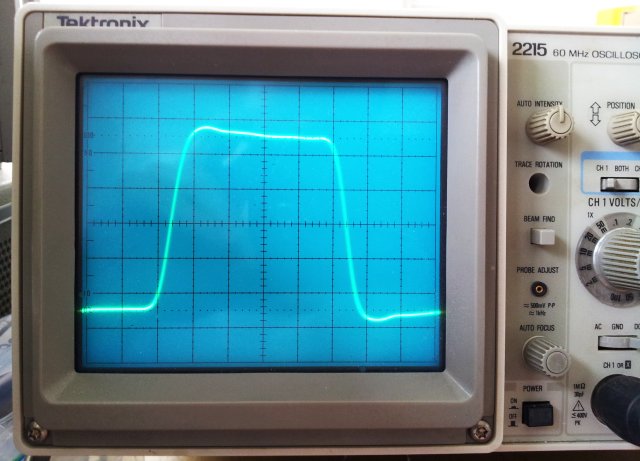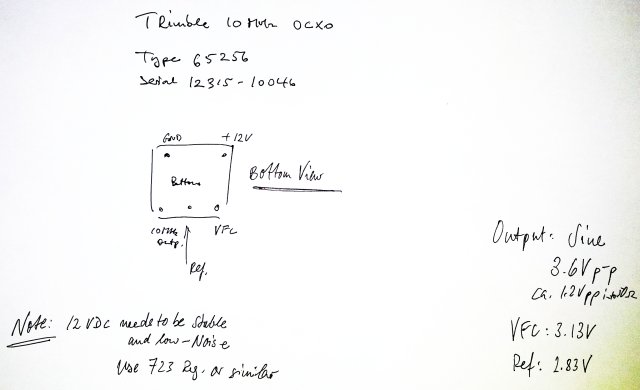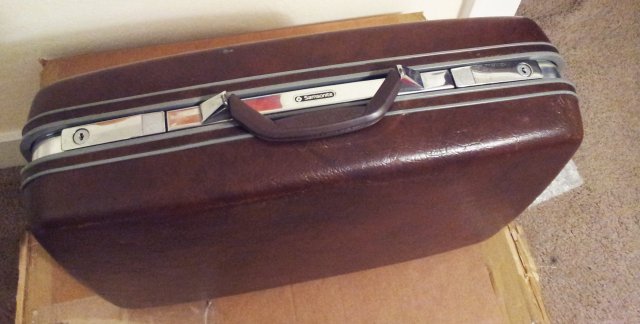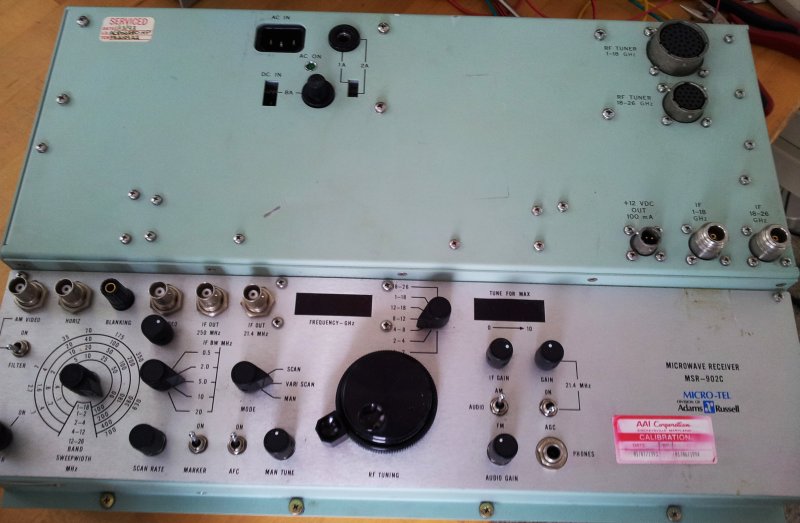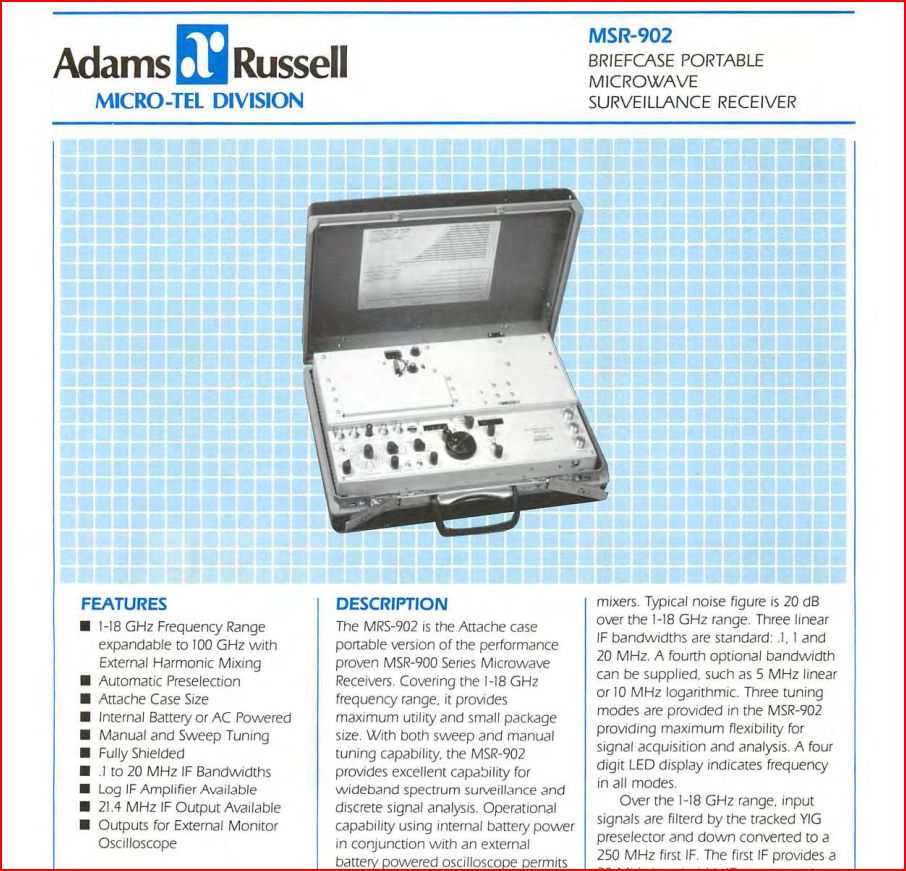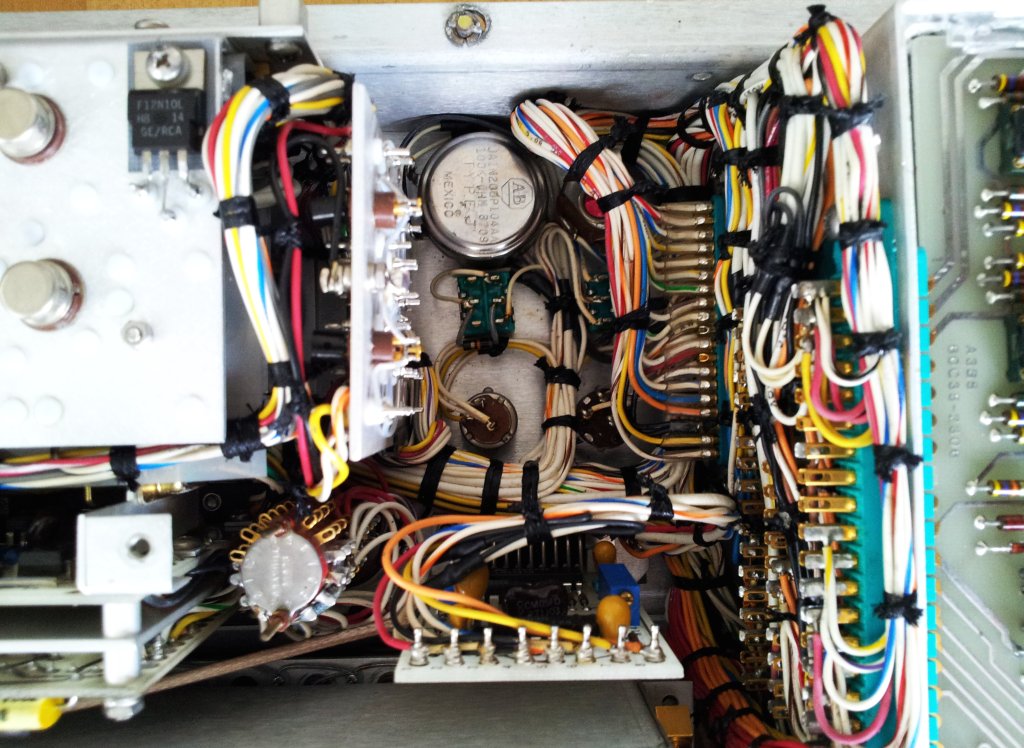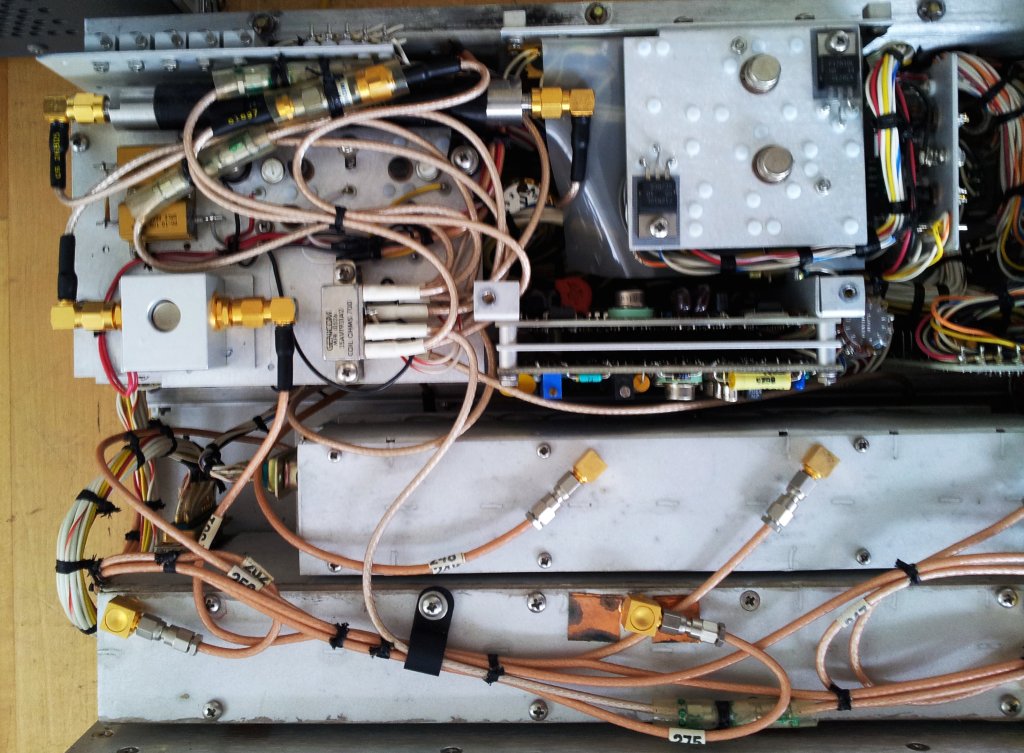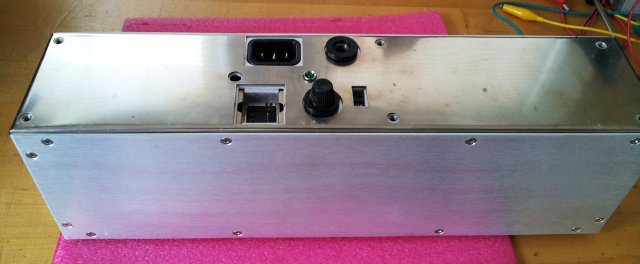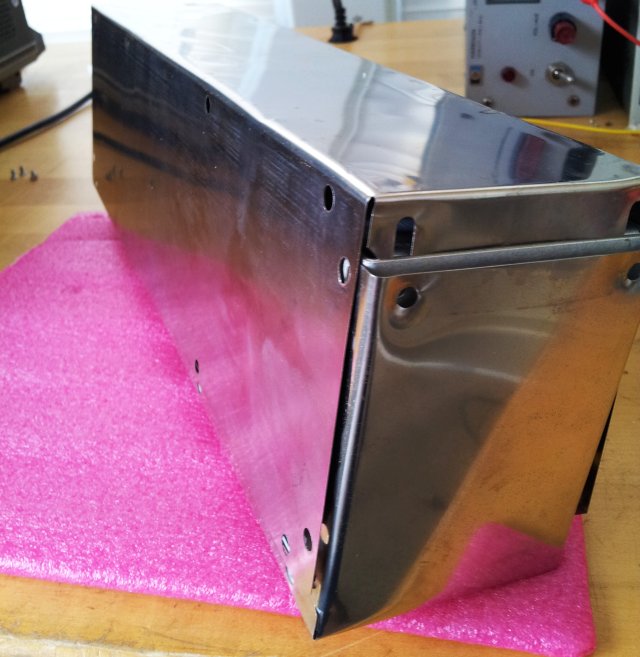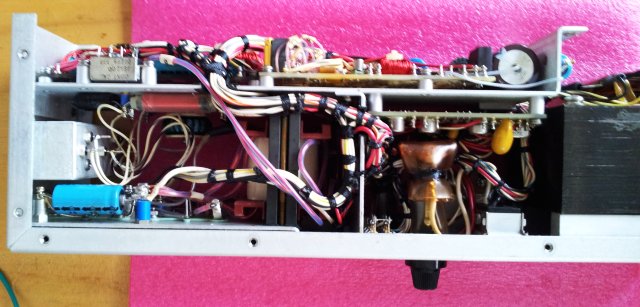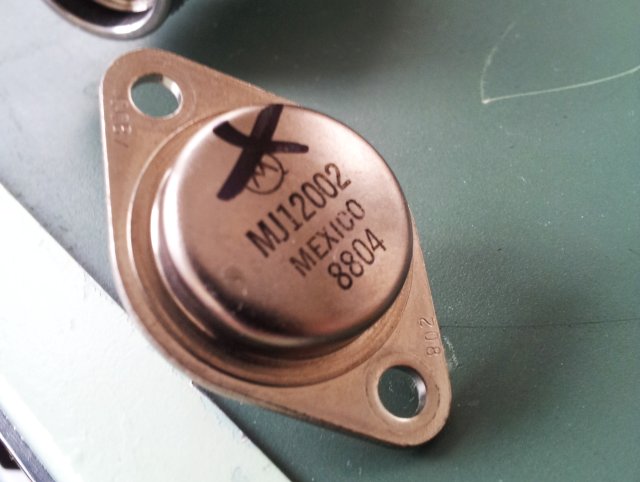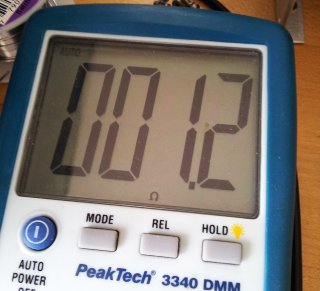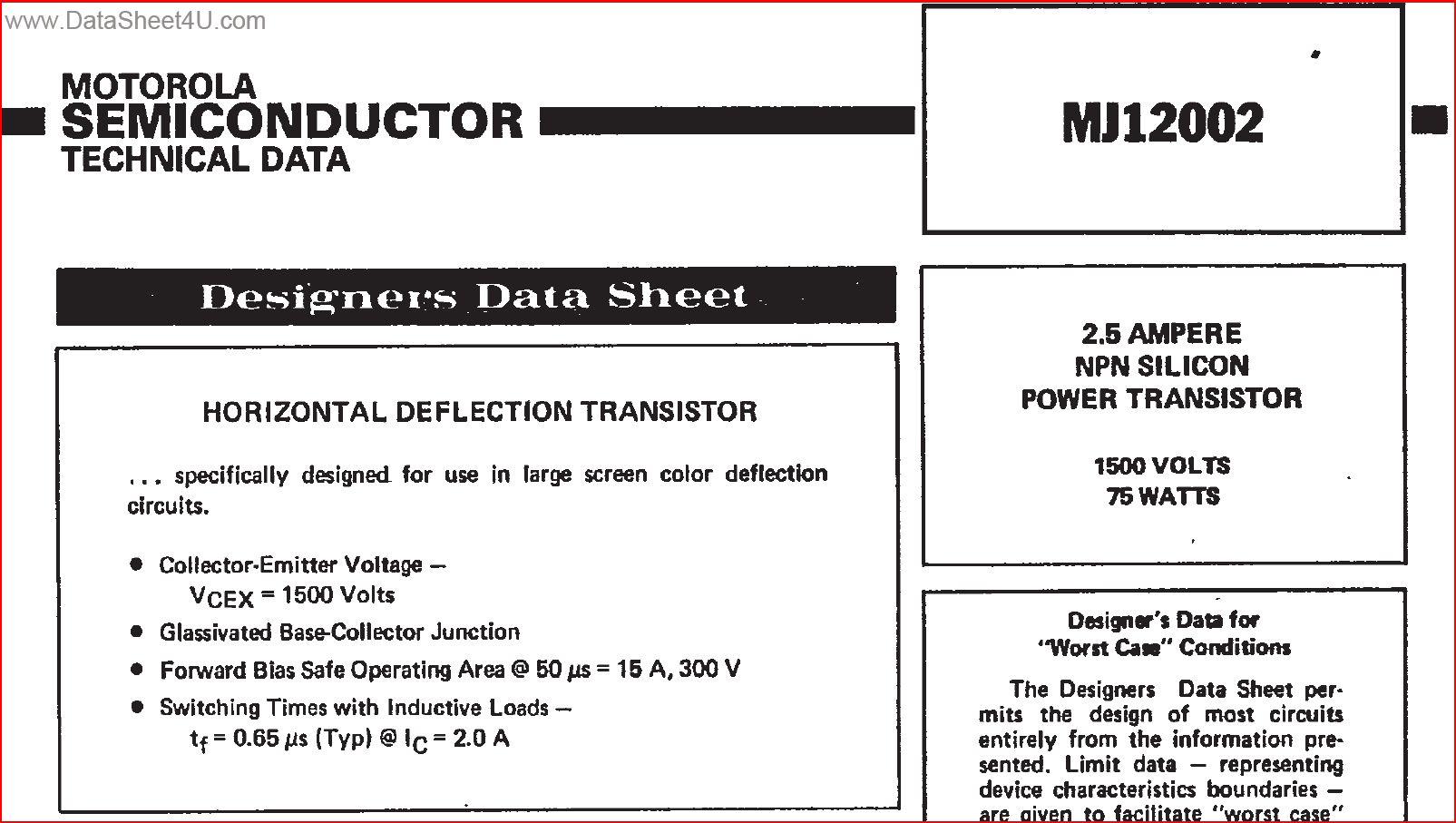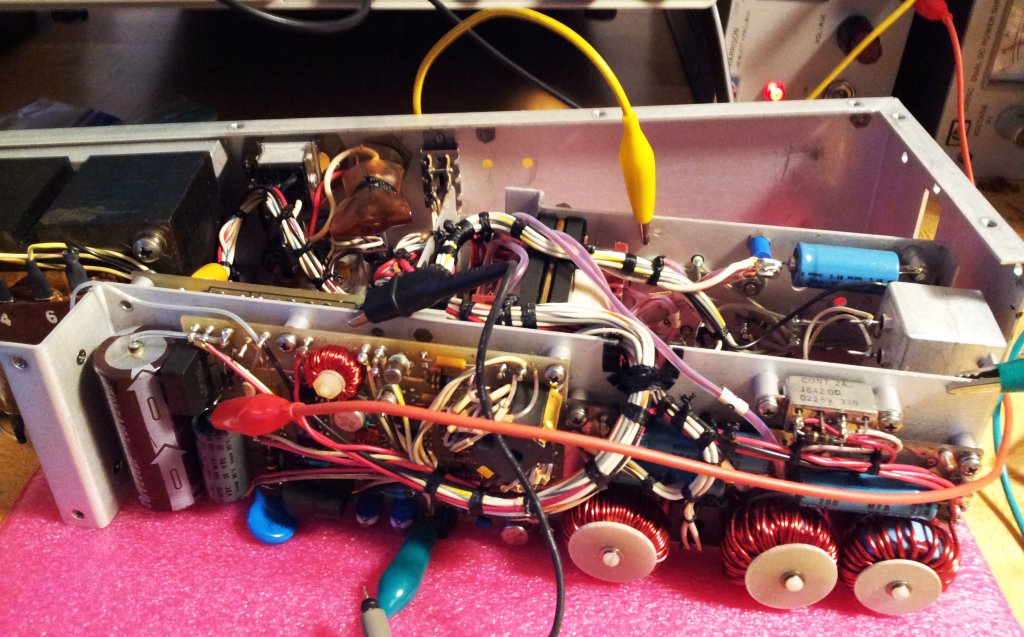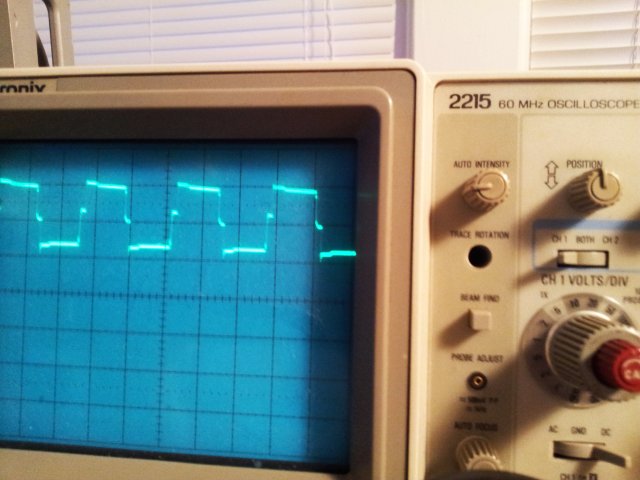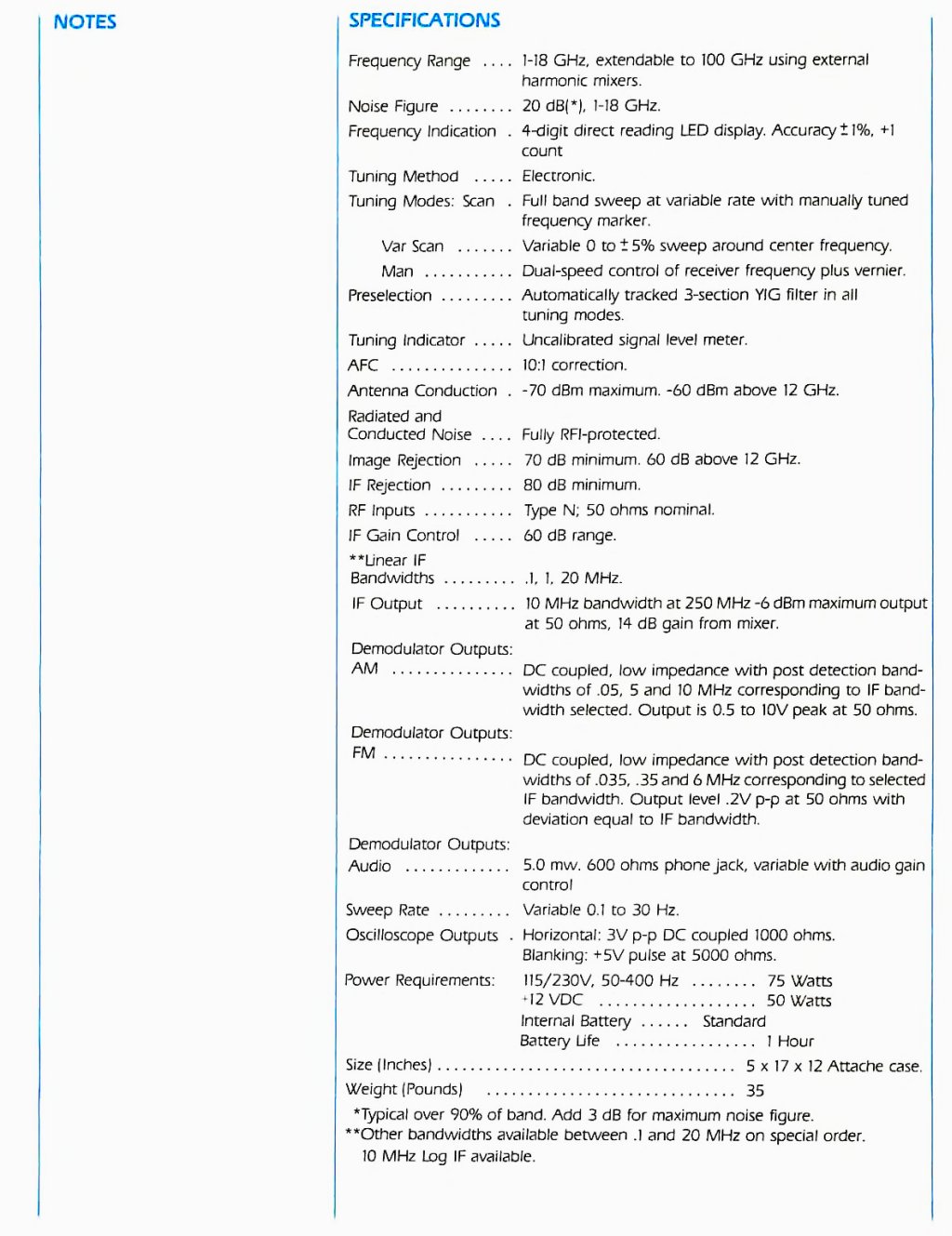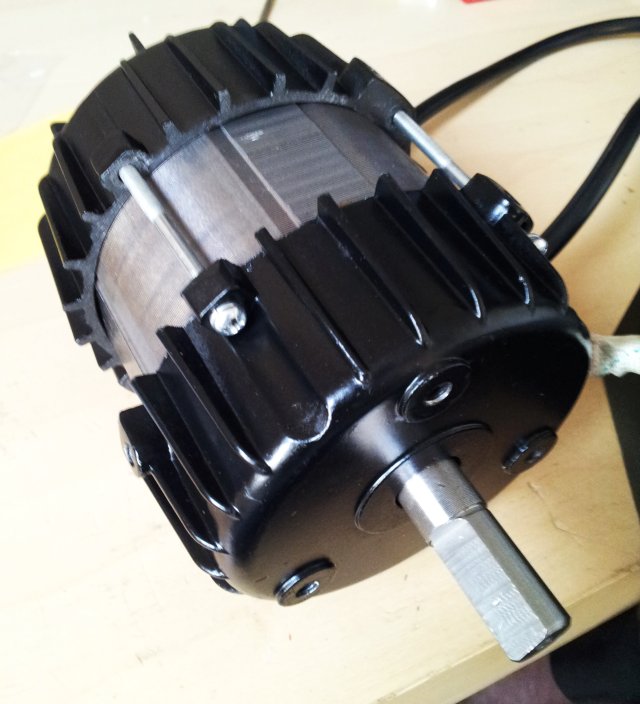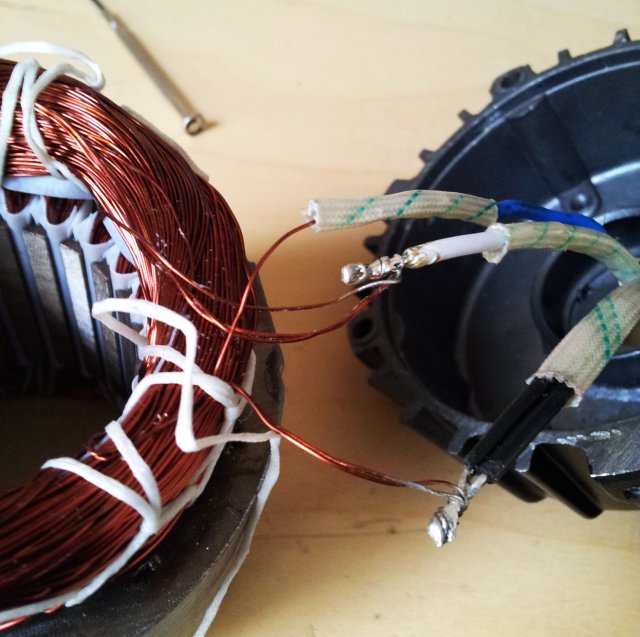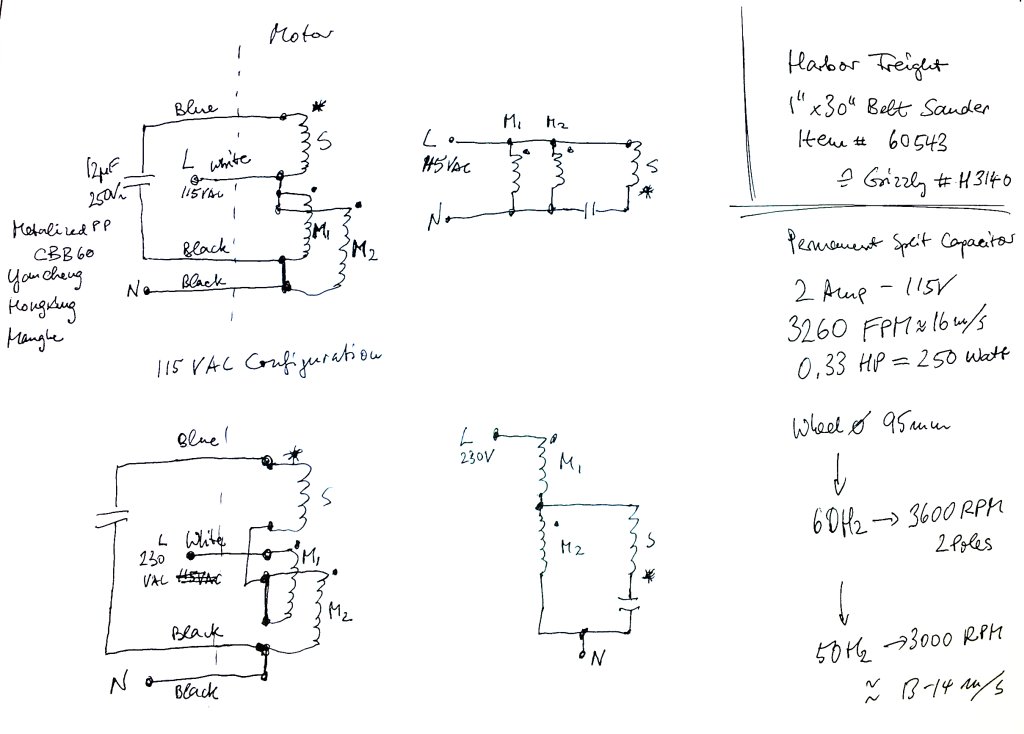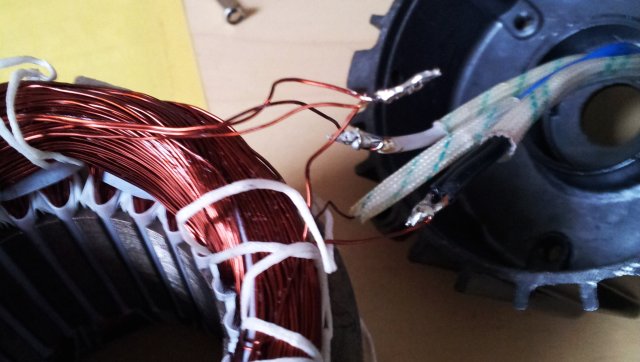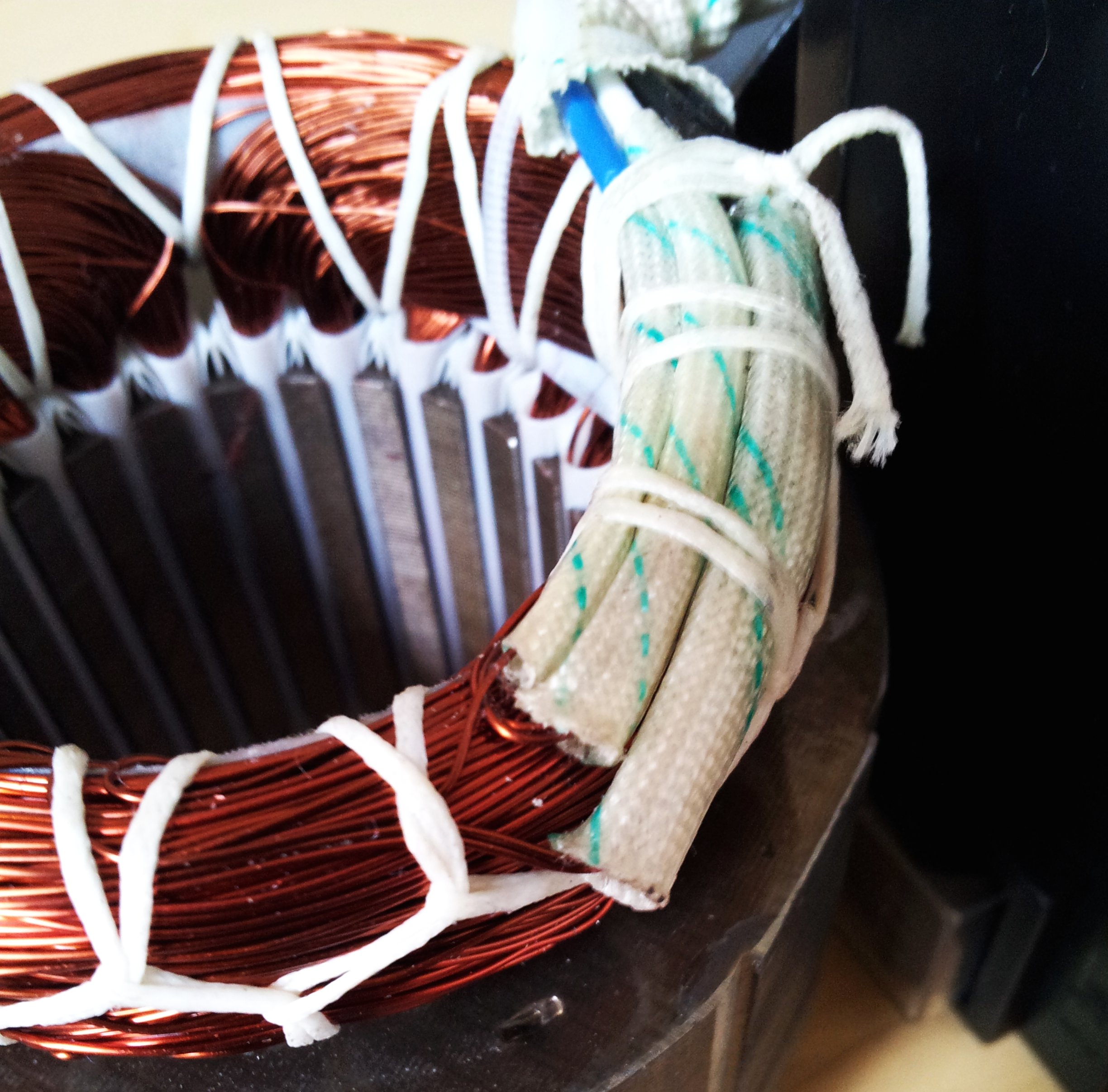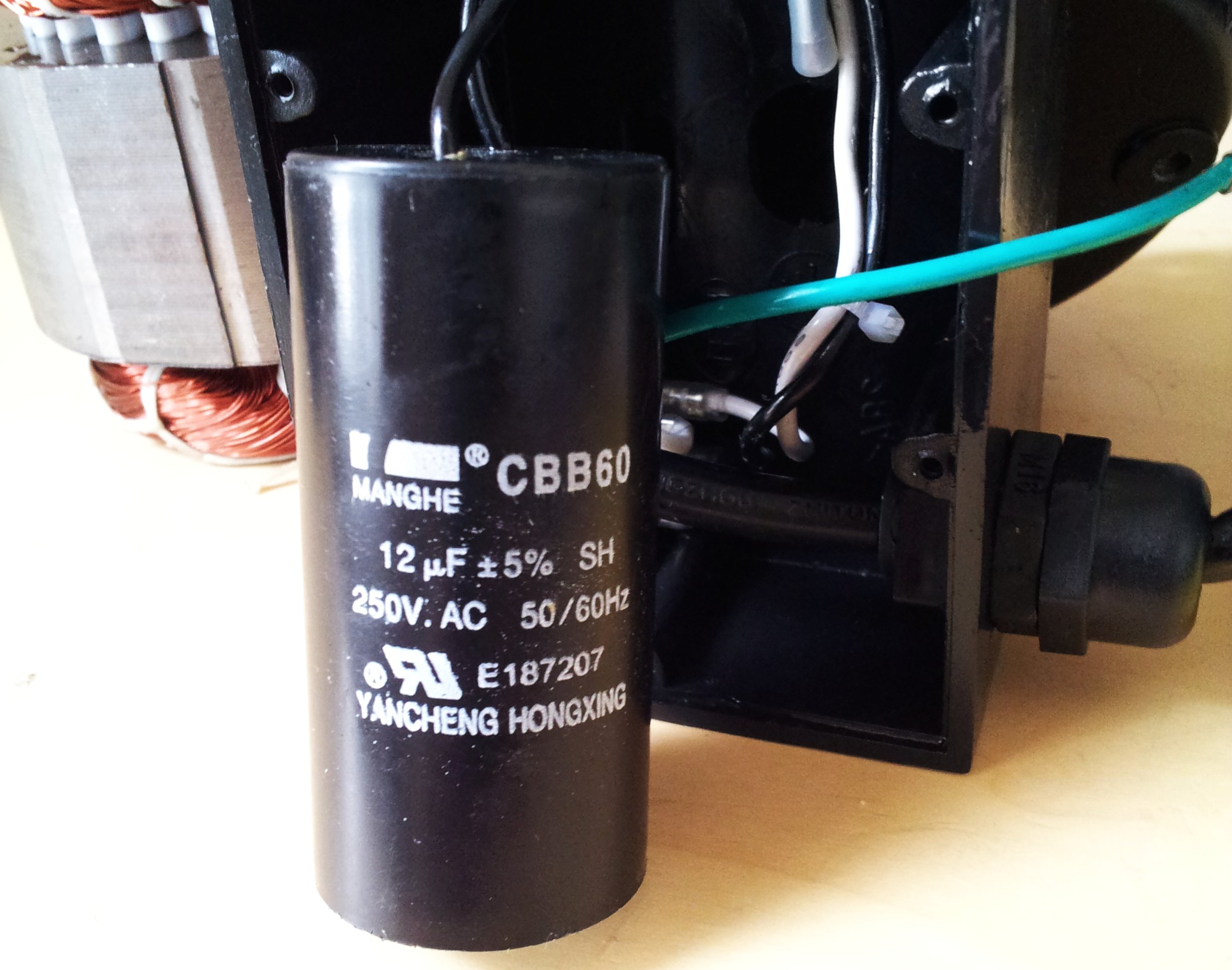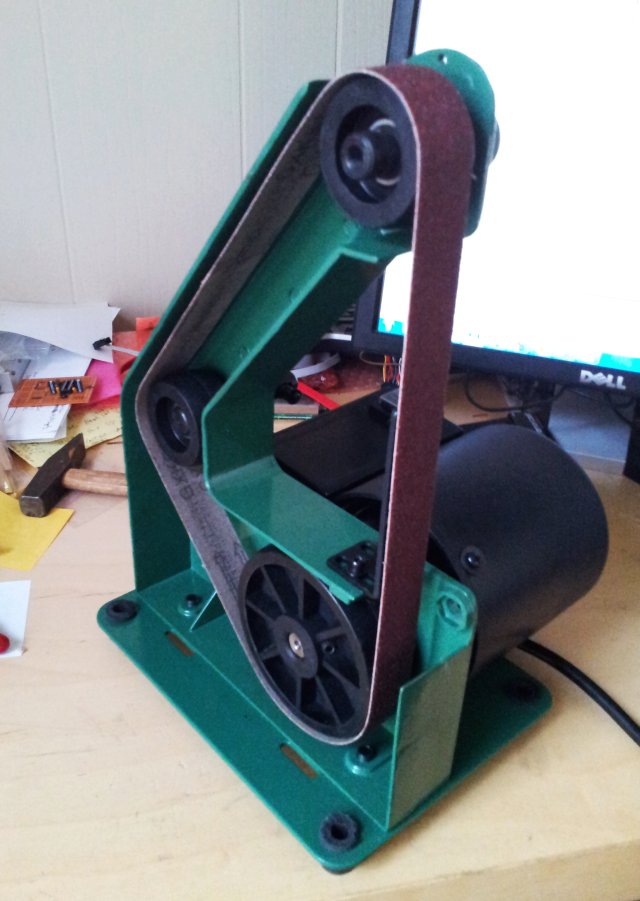Some progress with the MSR-902C, which is basically working, but not on all bands – see earlier post.
With no documentation on the MSR-902C available, except some data sheets, I first traced the band select signals – and they appear to be generated on the A3B5 board, which we may call, band control board. This board also converts the 0-4 V tuning voltage from the tune dial to a 0.5-9 V signal that corresponds to 1 to 18 GHz (0.5 V/GHz slope).
This is a top view of the A3B5 assembly. On the upper left, the tuning control voltage converter, left half, voltage comparators for the 1-18 GHz multi-band mode. These comparators assign the band number to the tuning voltage, when the 1-18 GHz range is used. It is disabled (even supply voltage cut) when the MSR-902C is in single-band mode (selected by band selector switch).
First observations – there are control LEDs that seem to indicate which band is currently active, but for some reason, they don’t light up on all bands. Very strange. Probed around the logic signals, and at least some signals are there, still no LED lighting up. Very suspicious. After some head-scratching, decided to probe the LEDs by supplying some external power, and poking around with a resistor. Turns out, some of the LEDs are dead. They just barely light up with 20 mA of current applied, and no sign of light at all at the current level supplied to them by the A3B5 assy.
After repair of the defective leads, you can clearly see the difference of the new LED, vs. the old LED – some of the old ones are still working, but not very bright any more, and I’m going to replace them all, once I have this back in the main workshop with a better supply of 3 mm red LEDs.
Another strange observation – two of the logic chips are rather hot. What is going on there? Furtunately, these are in sockets, a 7401, and a 7404, and a quick test revealed that one gate of each of these chips is sinking current, about 200 mA. So these need to be replaced.
Mugshots of the culprits so far….
Not sure if it is very clear, but here are the connector signals of the A3B5 assy, and the description of the adjustment pots. First adjust for appropriate tuning voltages, then adjust for proper band switching in multi-band mode, monitoring the LEDs.
The next thing, the A3B6 assy. No apparent defect, but still needed to find out what it does, and how to adjust. It appears to be the multi-band control assy, converting the 1-18 GHz full-range tuning voltages to tuning voltages for the individual bands, by applying offset and slope corrections. The offsets/slopes are selected by CMOS multiplexers as it is custom for most of the MSR series designs. The output tuning voltage is buffered, and forwarded to the other circuits.
Here, you can clearly see the order of the adjustment potentiometers. For adjustment, if may be best to first align A3B5, and then supply appropriate reference signals to the MSR-902C, or measure the LO frequency, and do the fine adjustment with the 1-18 GHz full range mode selected, and tuning through all the bands. The fine adjustments would need to be done both at the low end (for offset), and at the high end (for gain), for each band. No big deal, once you know which of the pots to turn.
Further repair will have to wait a bit, until a few spare 7401 have been received. But all is looking pretty good.

